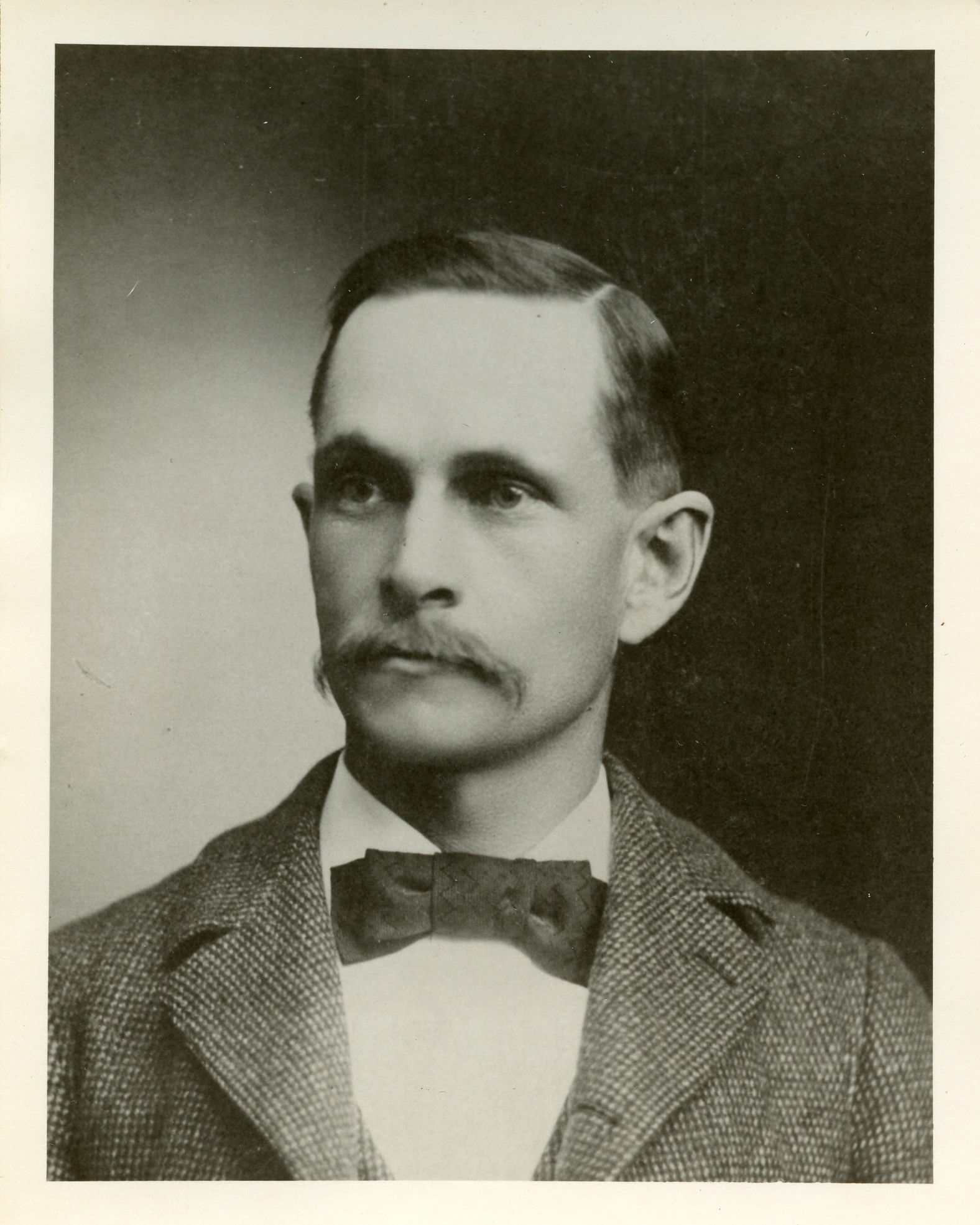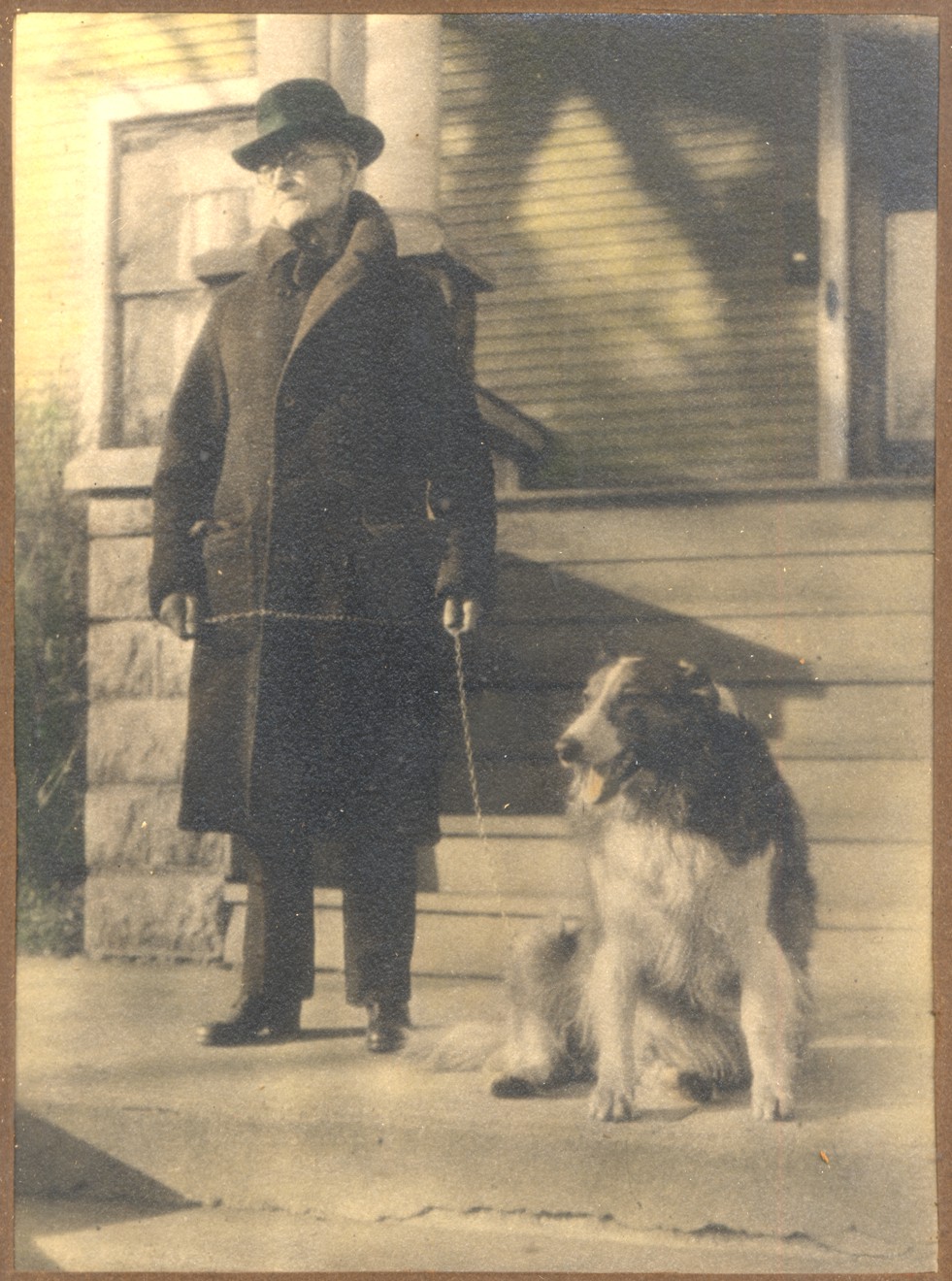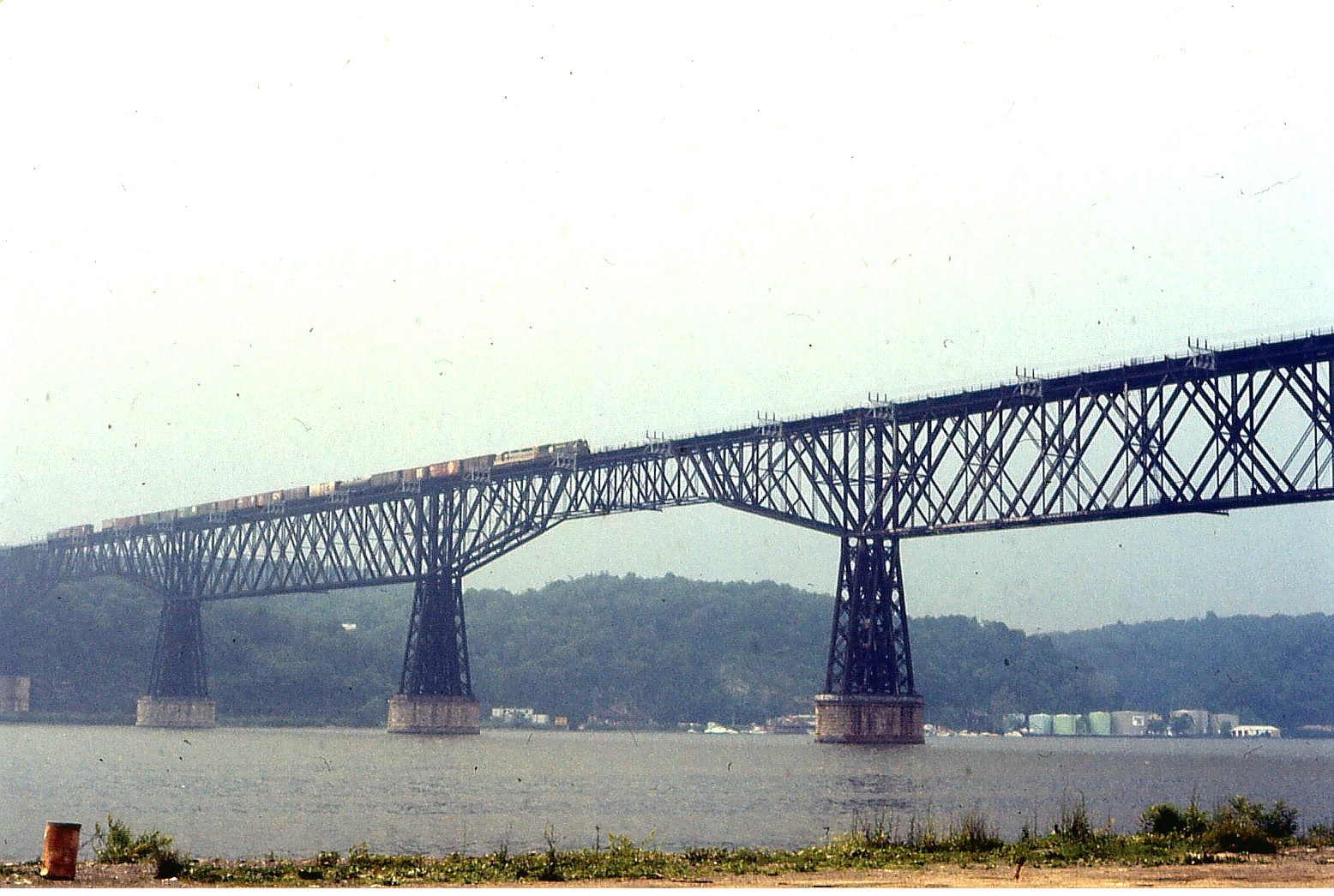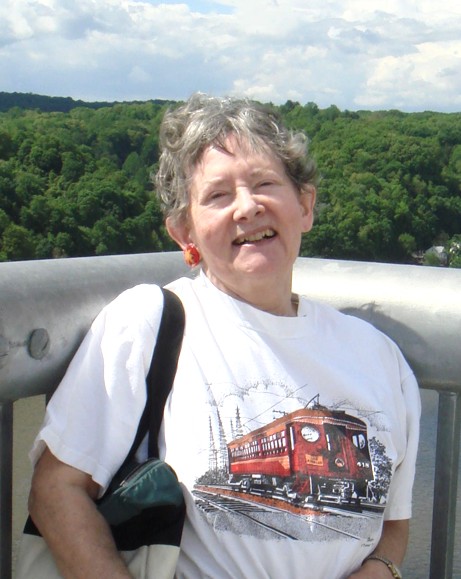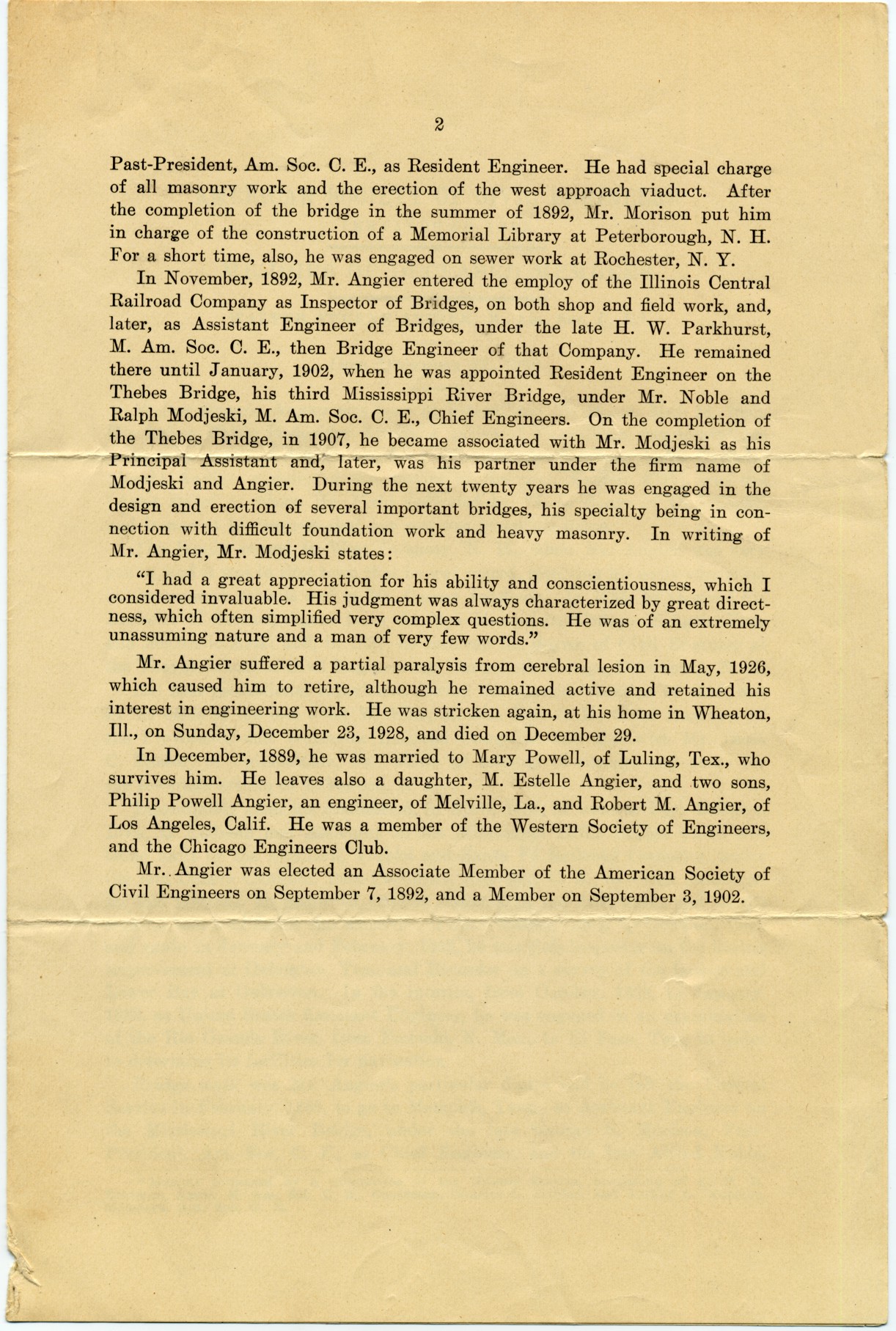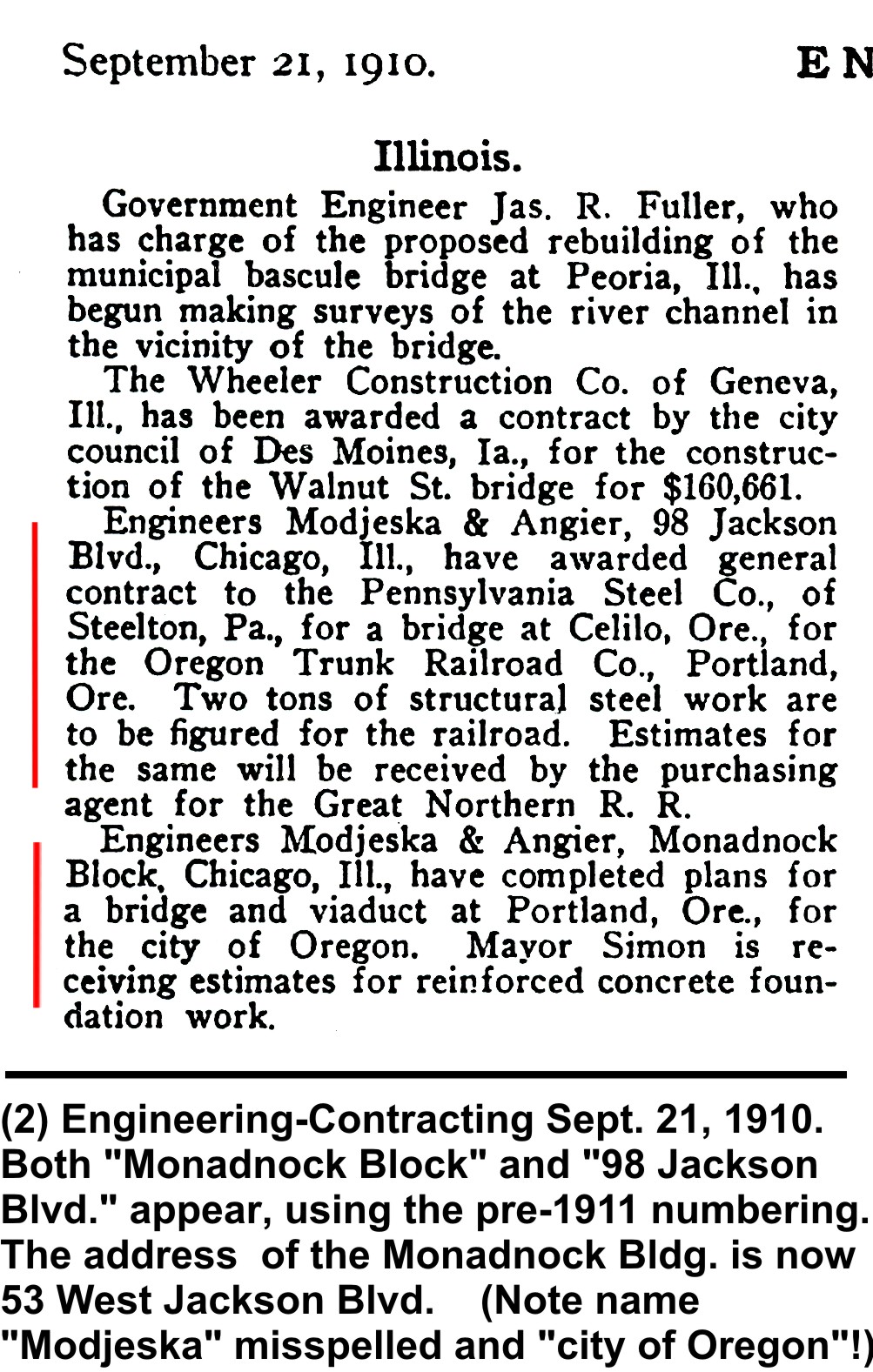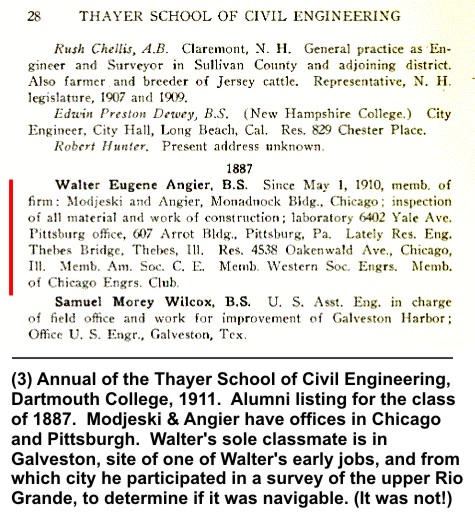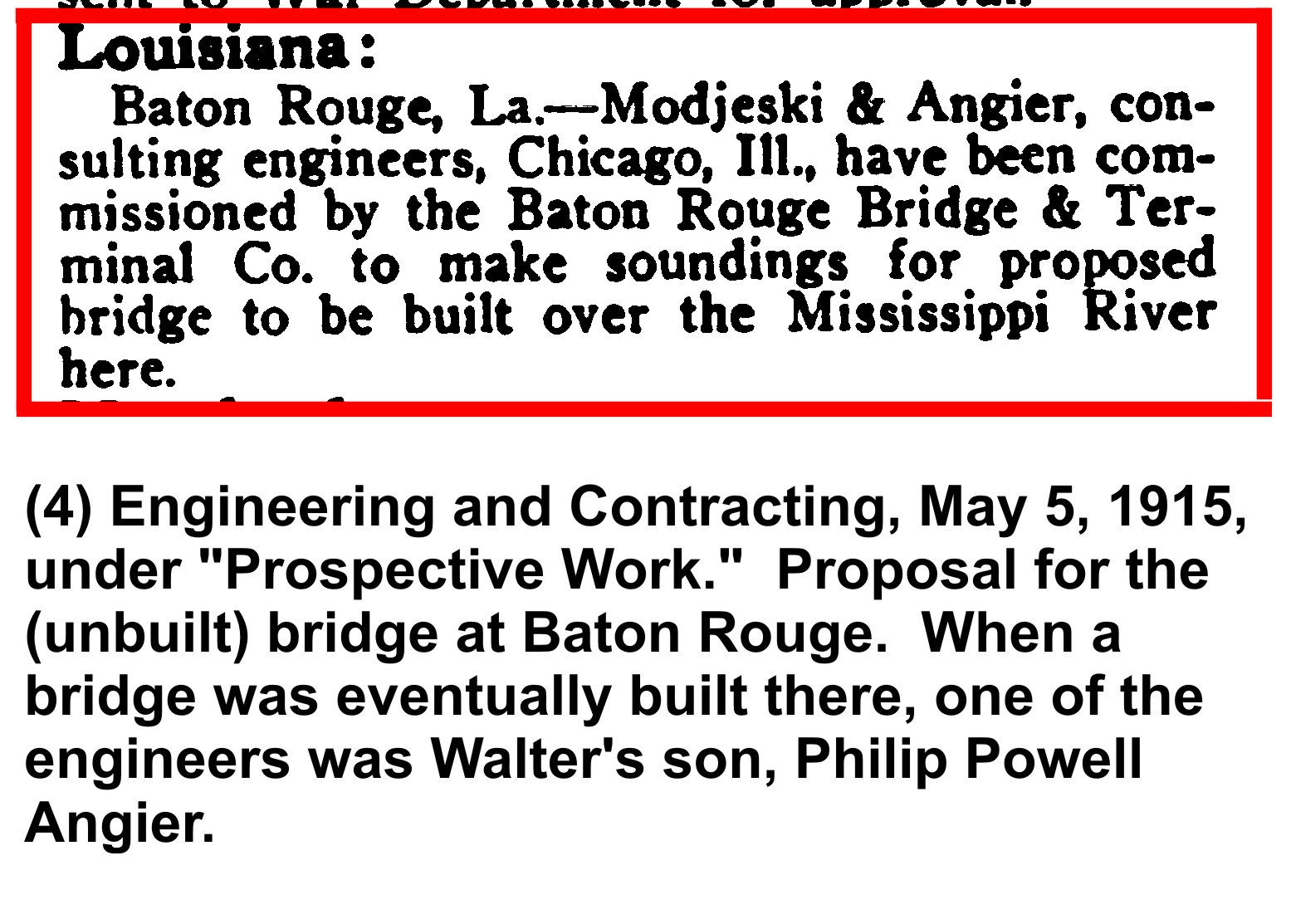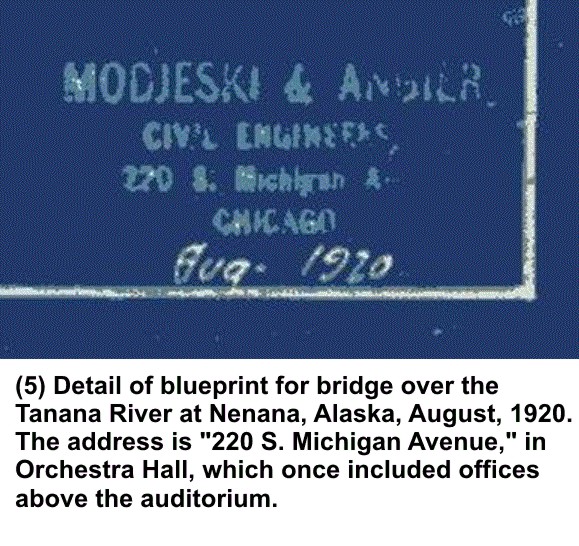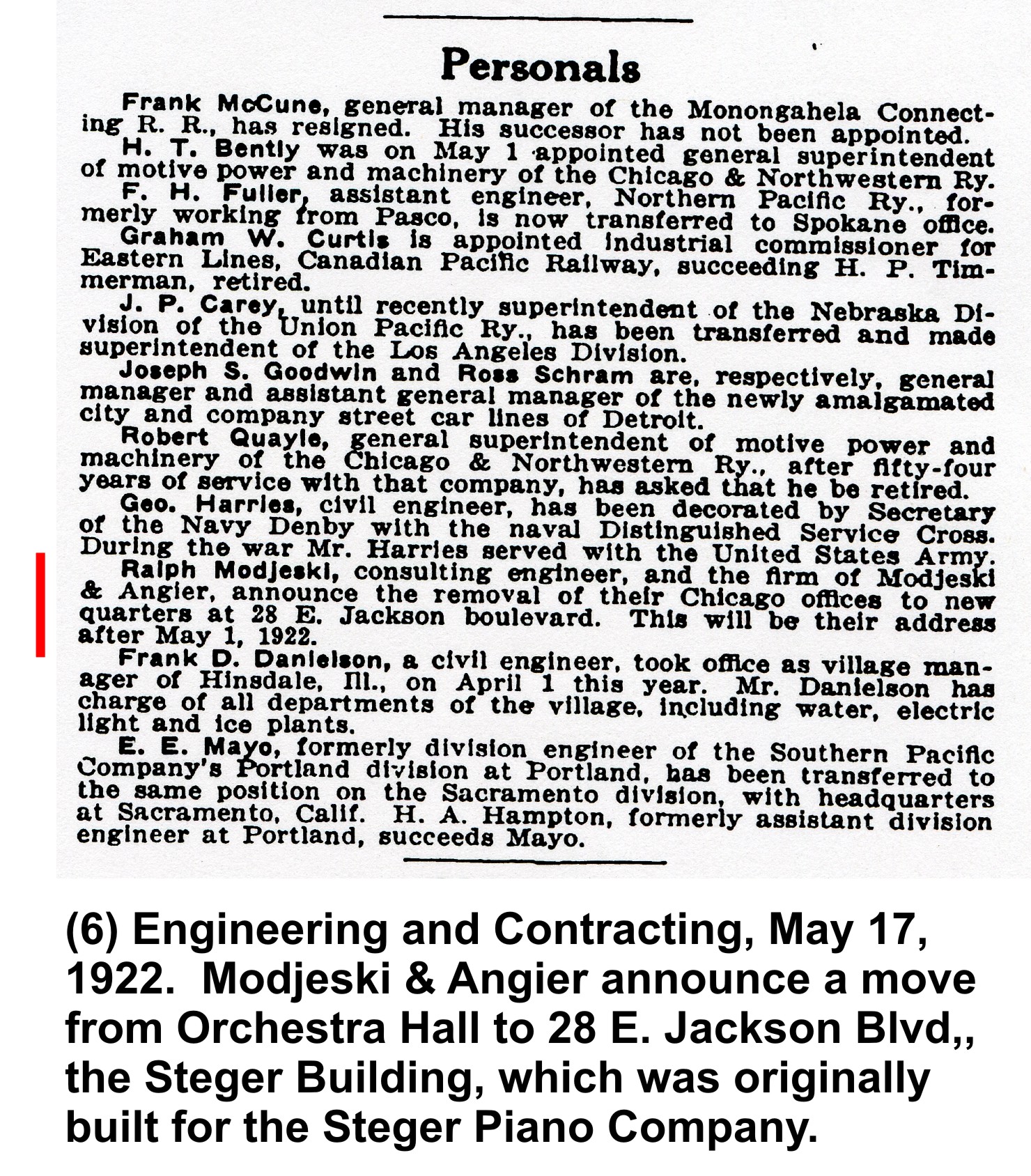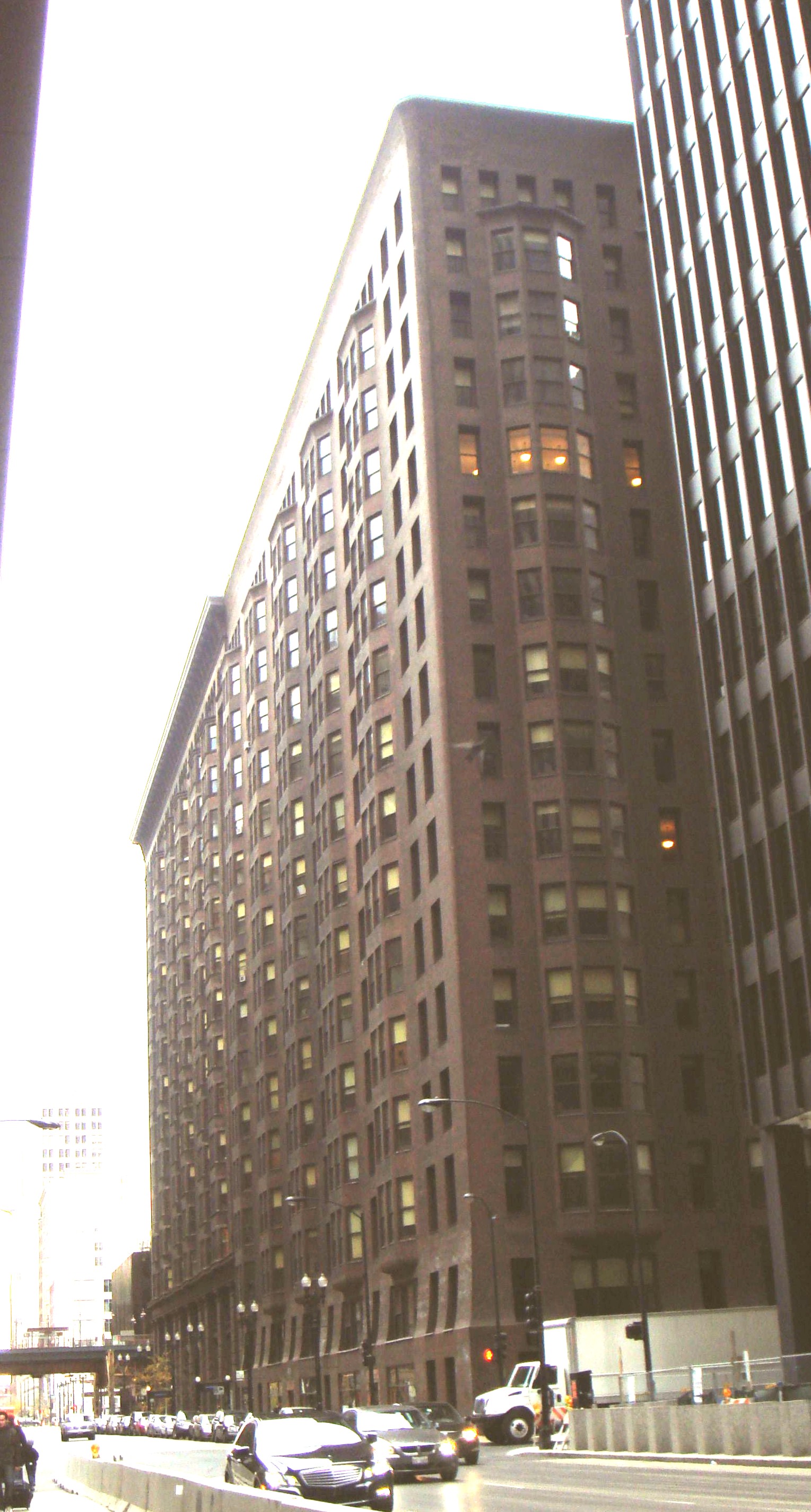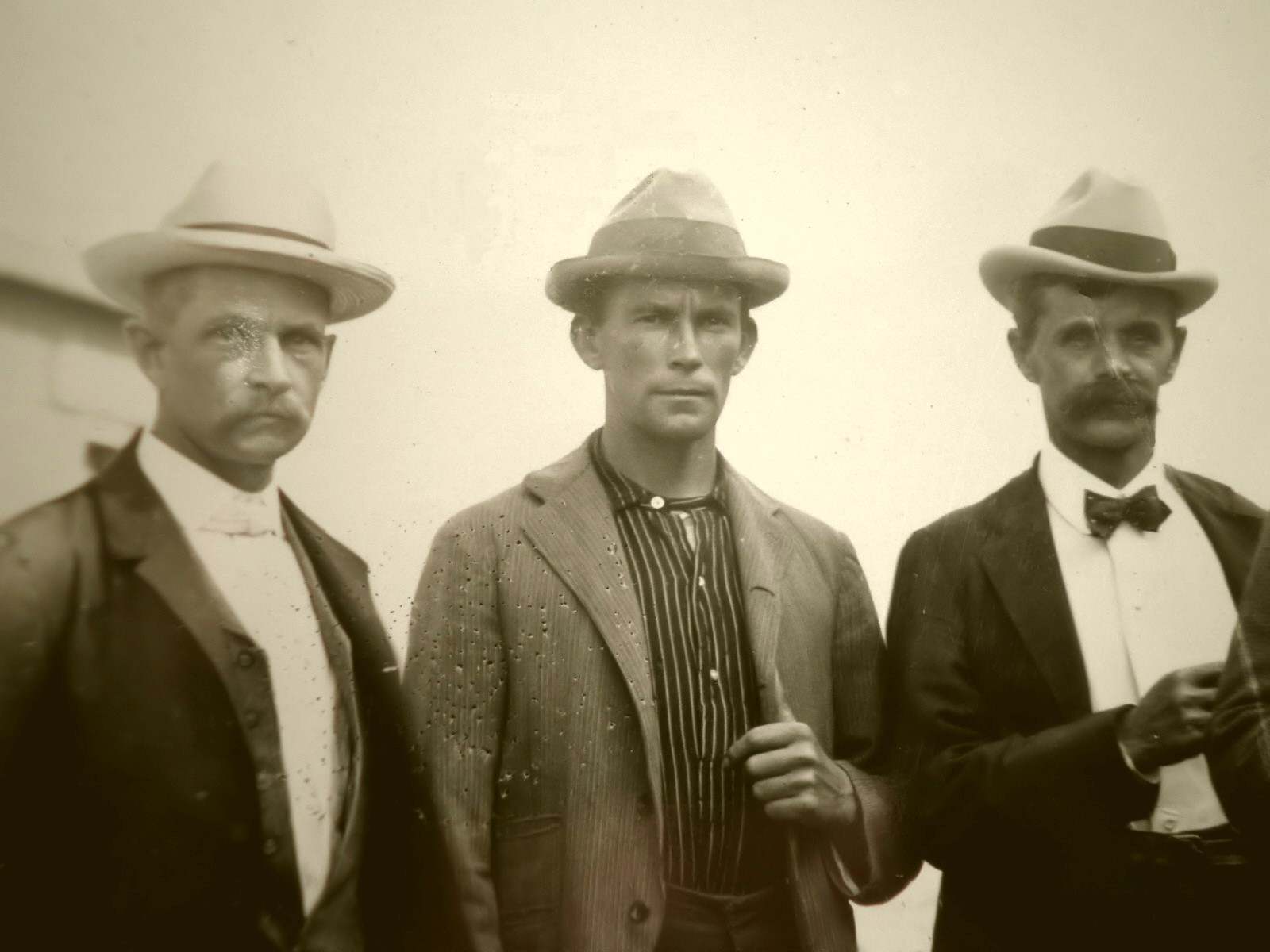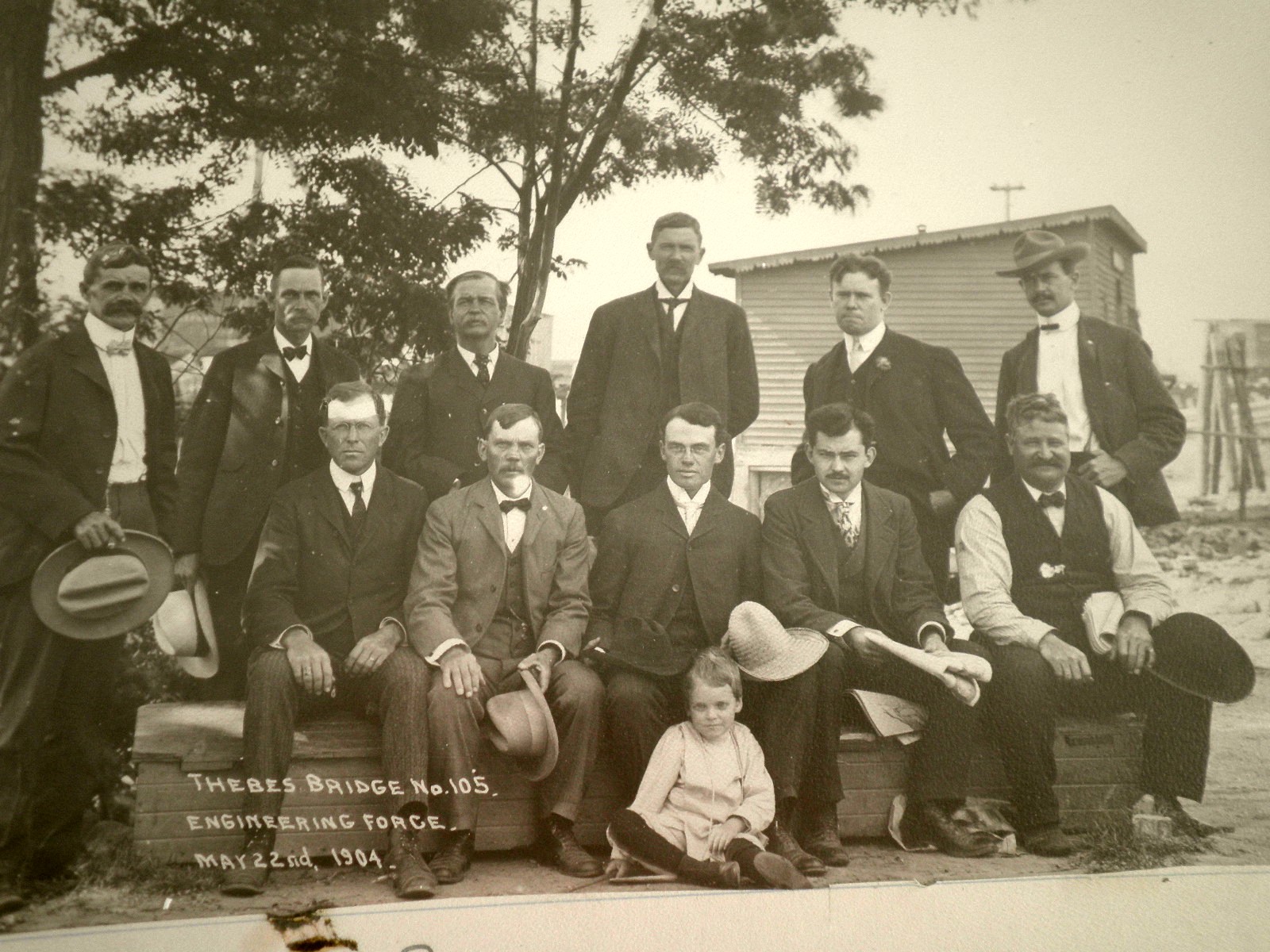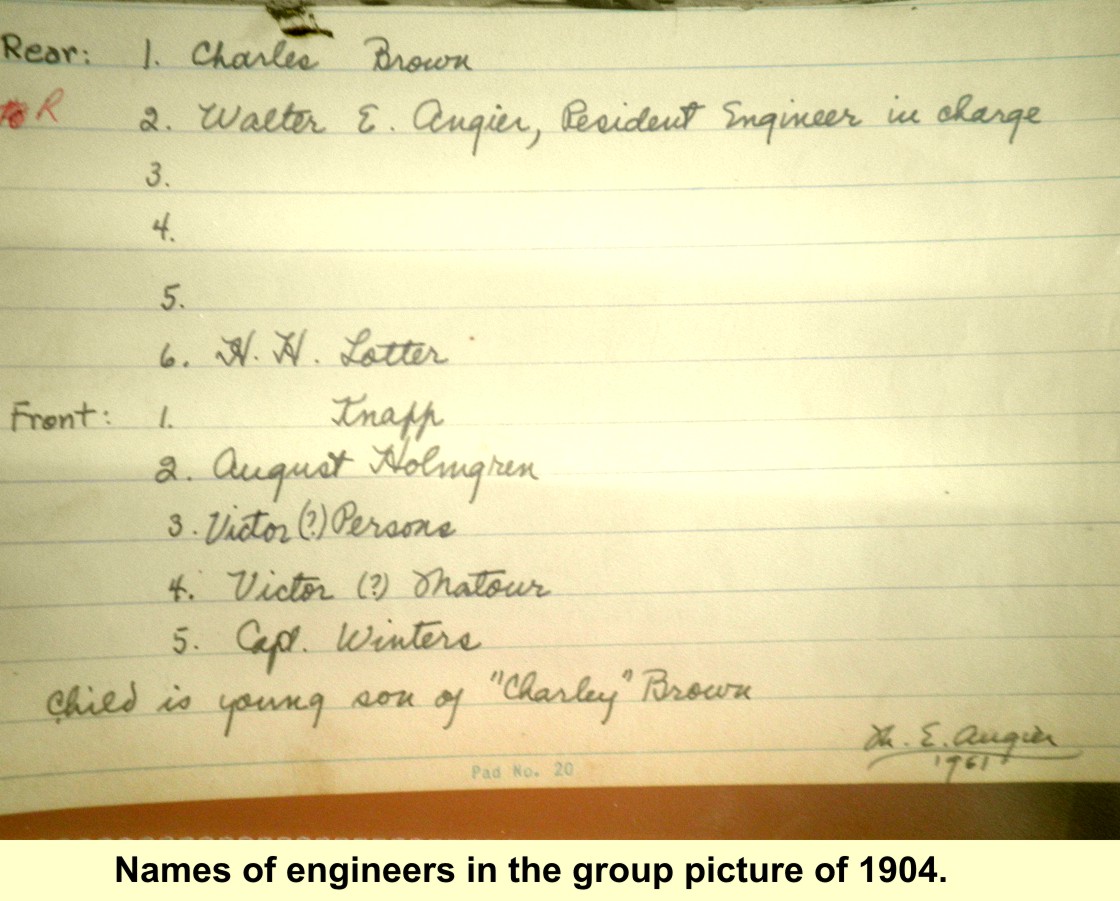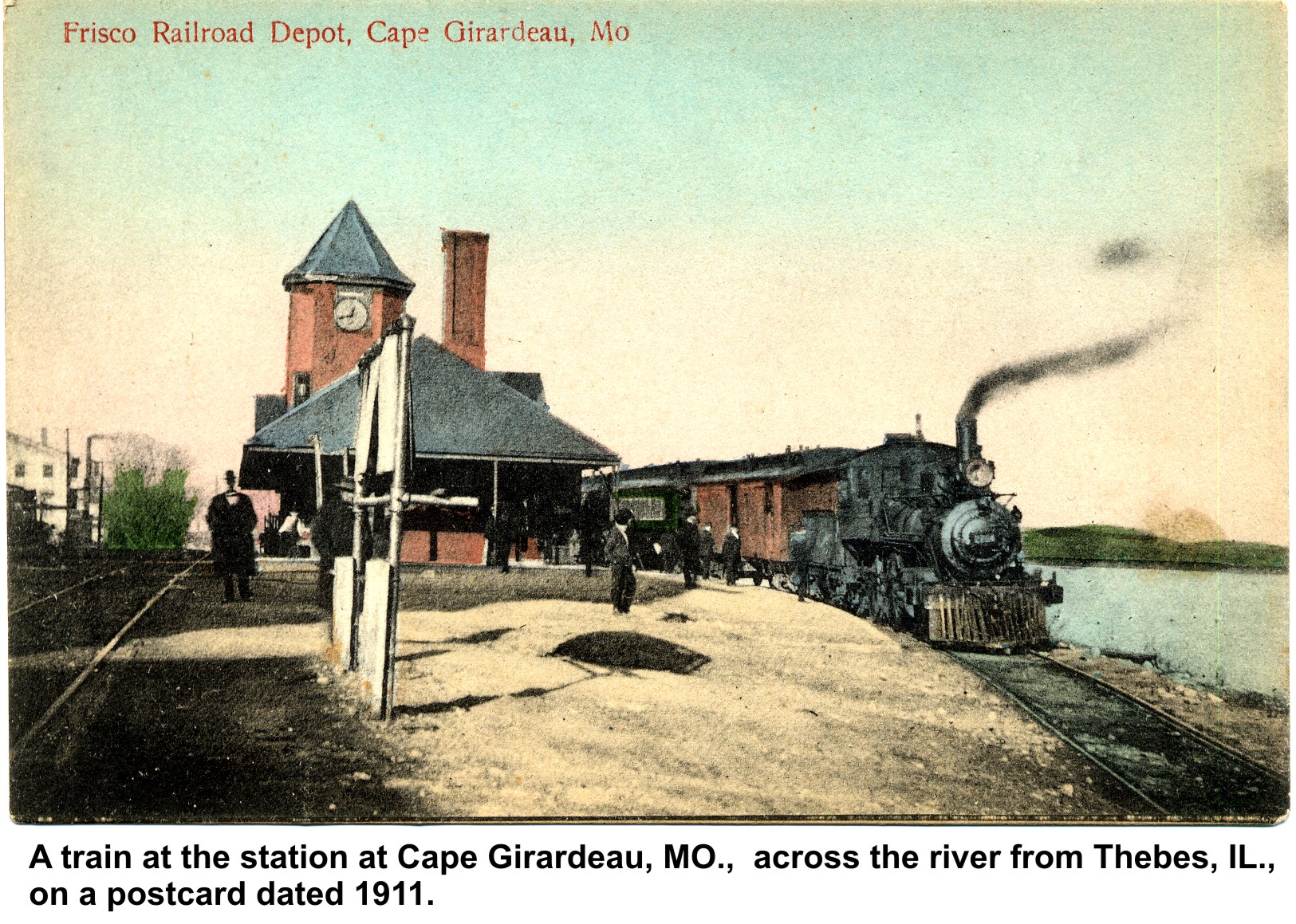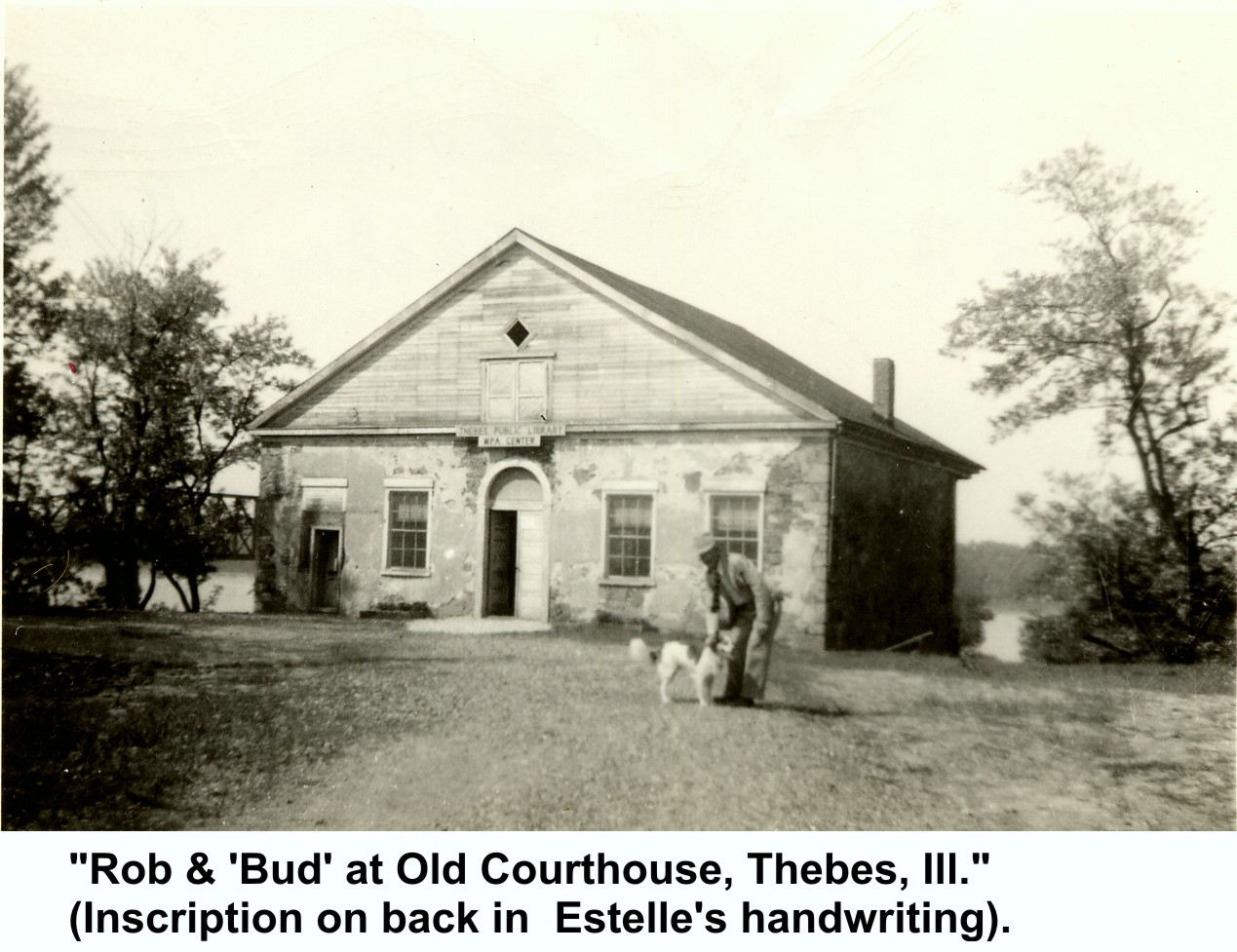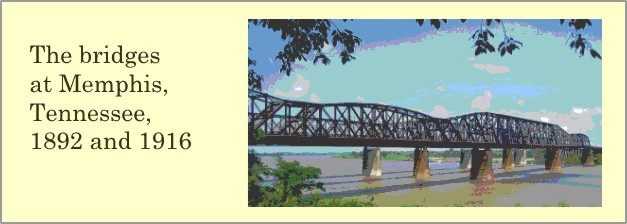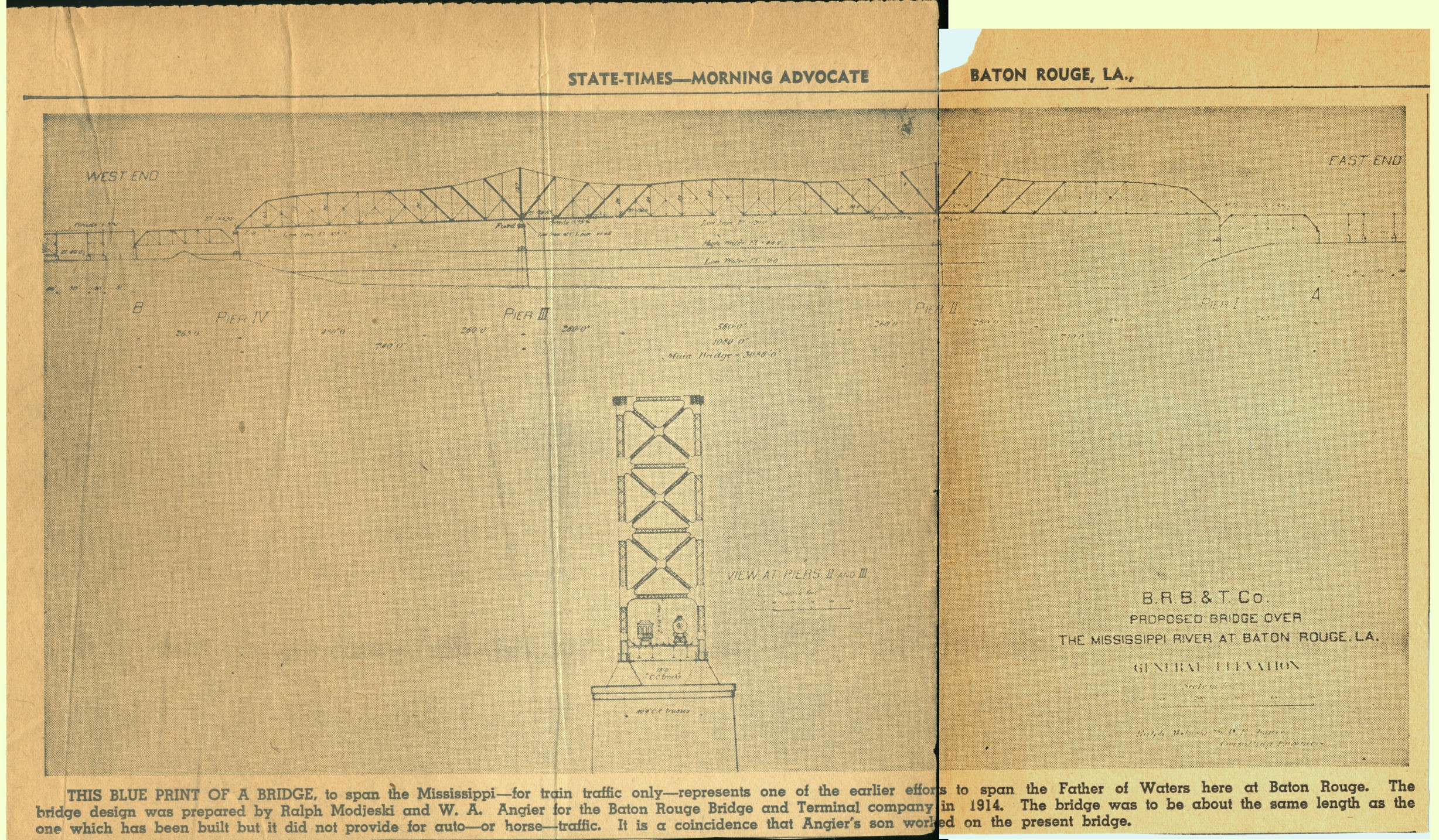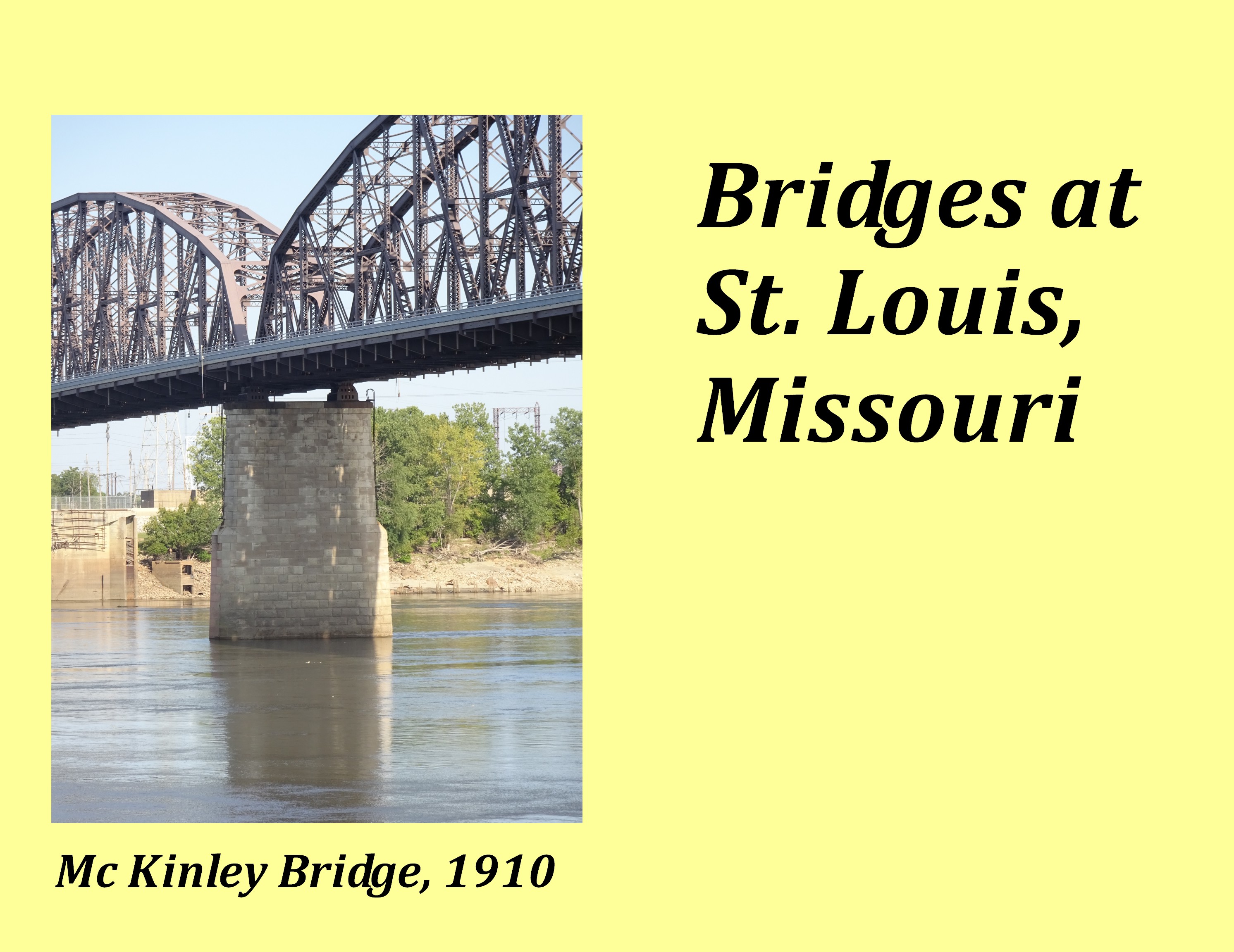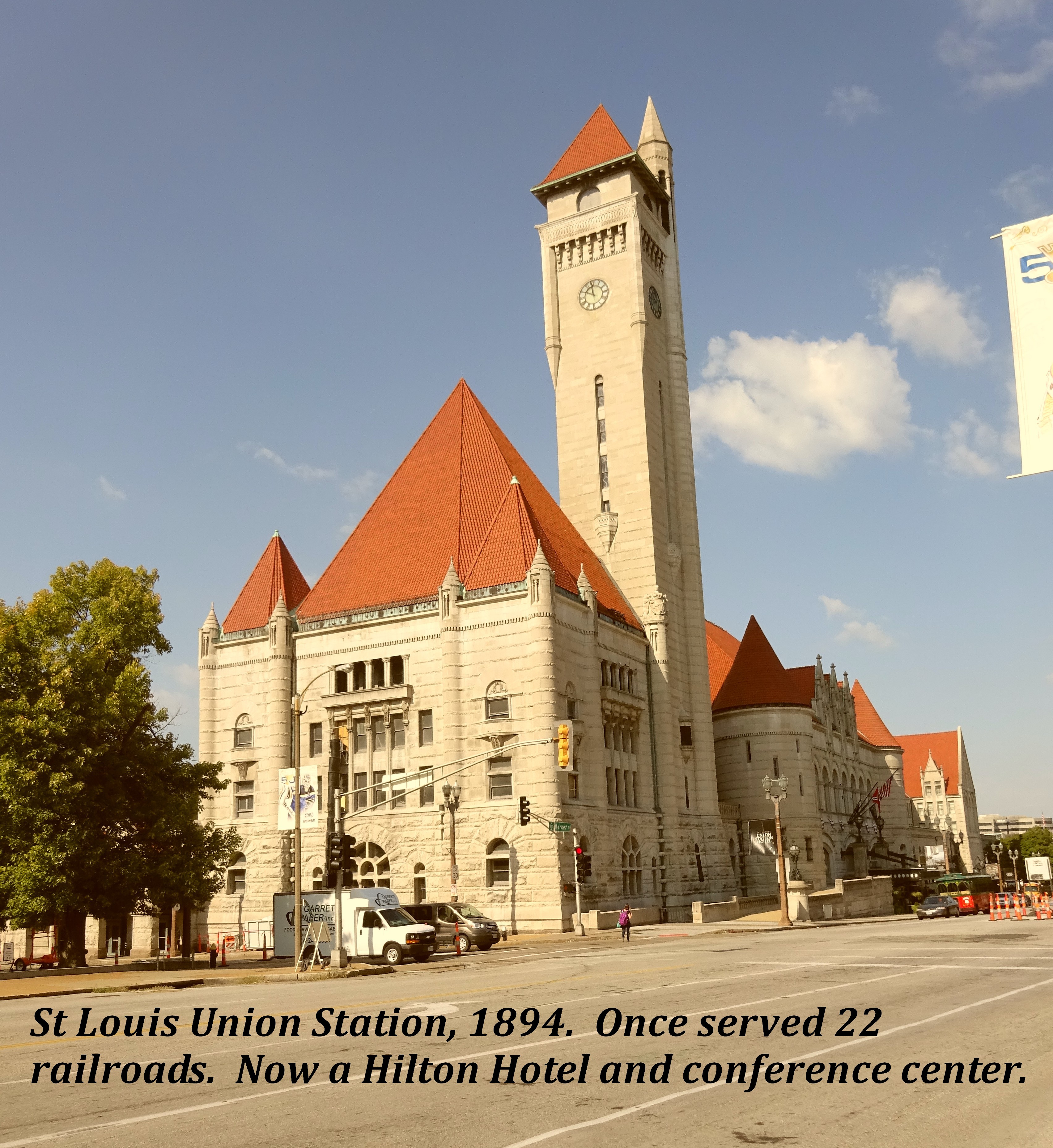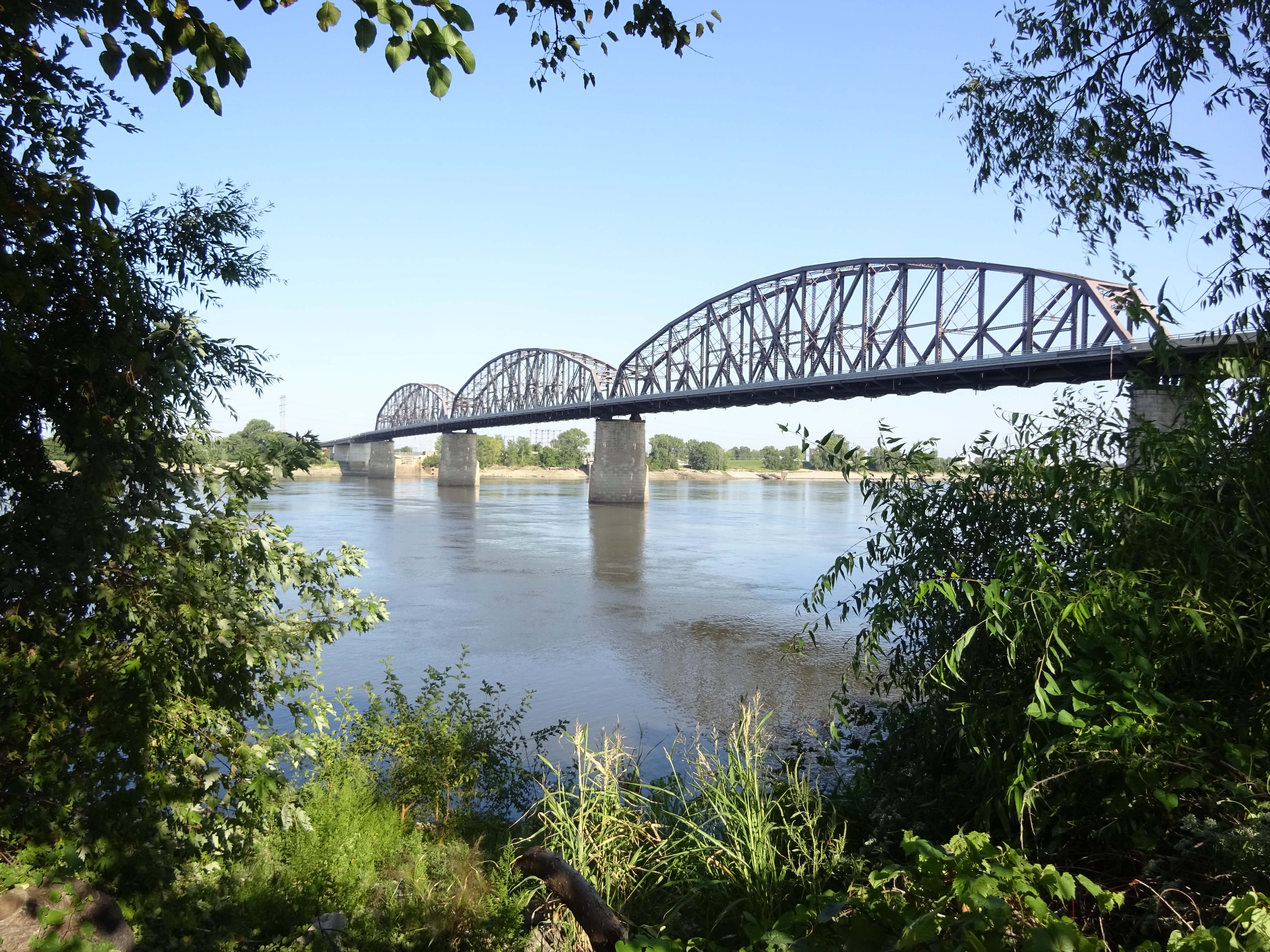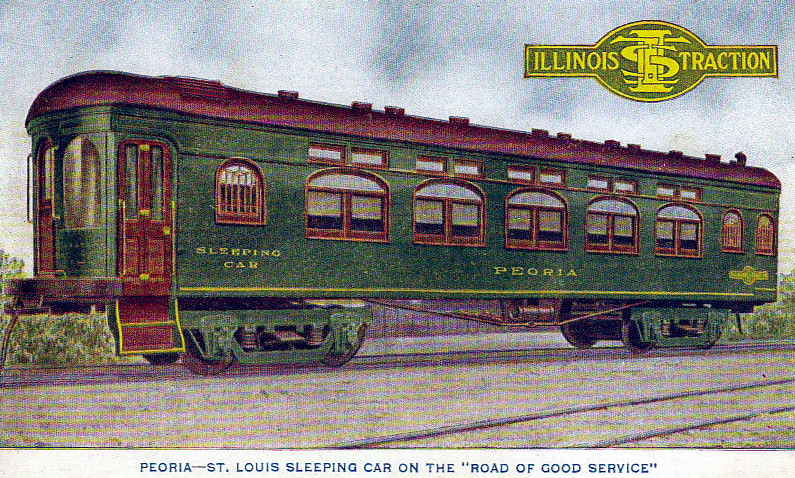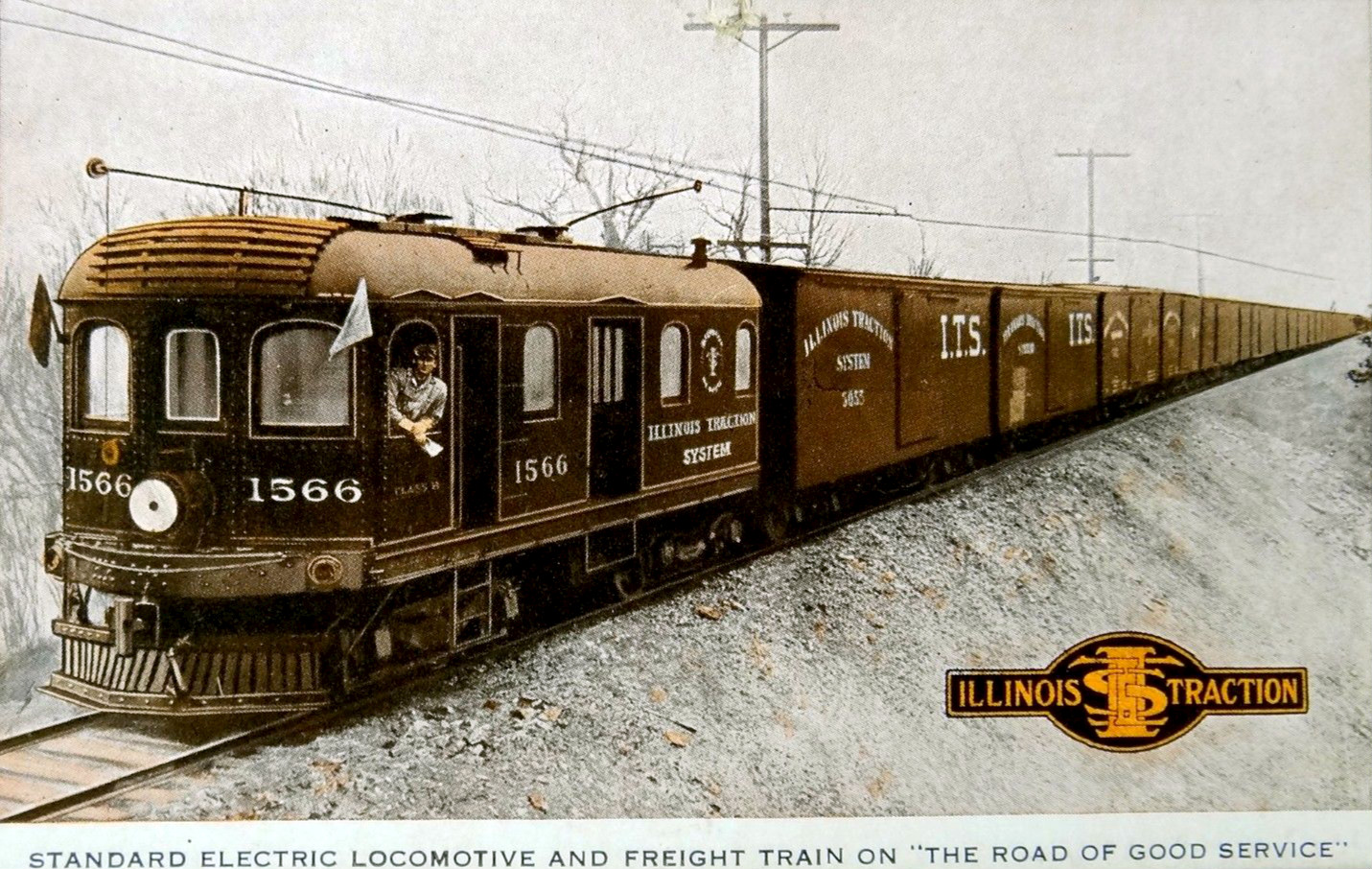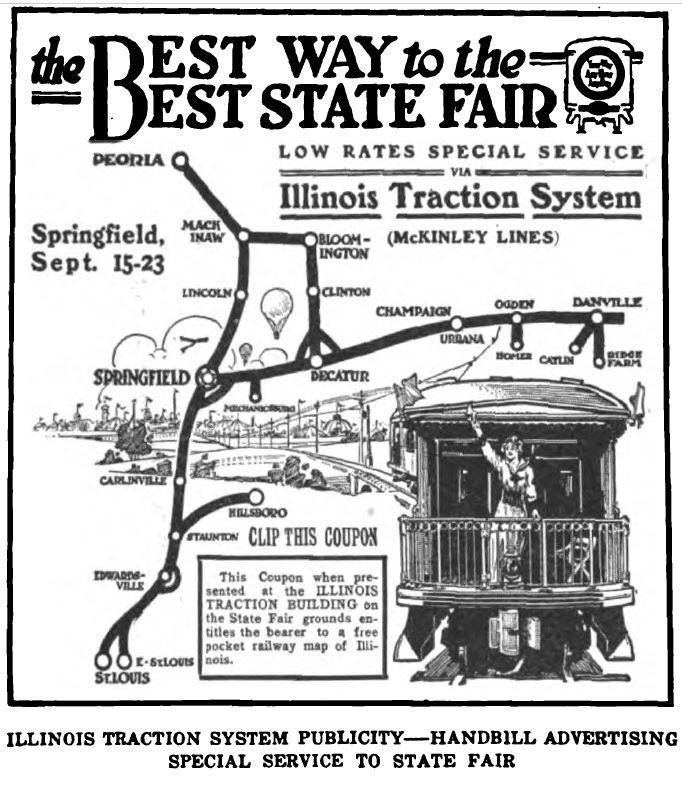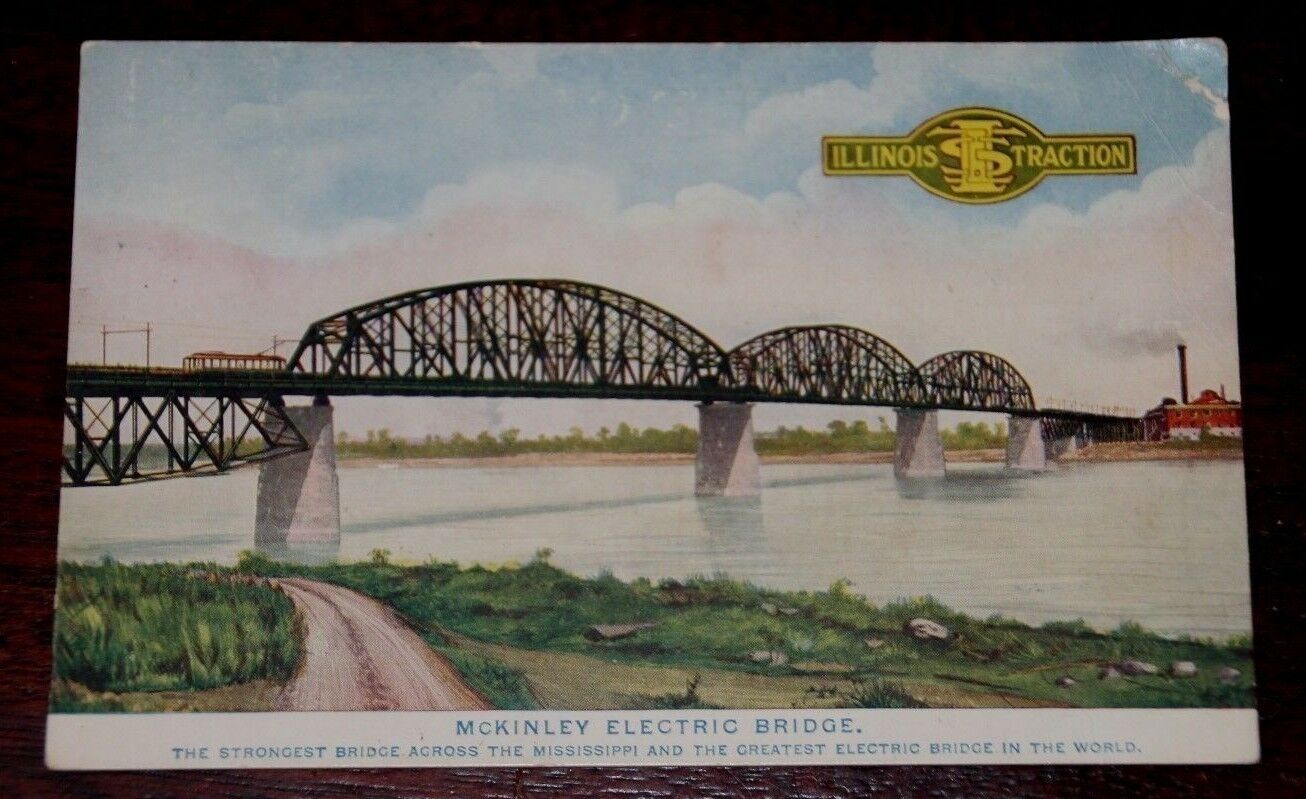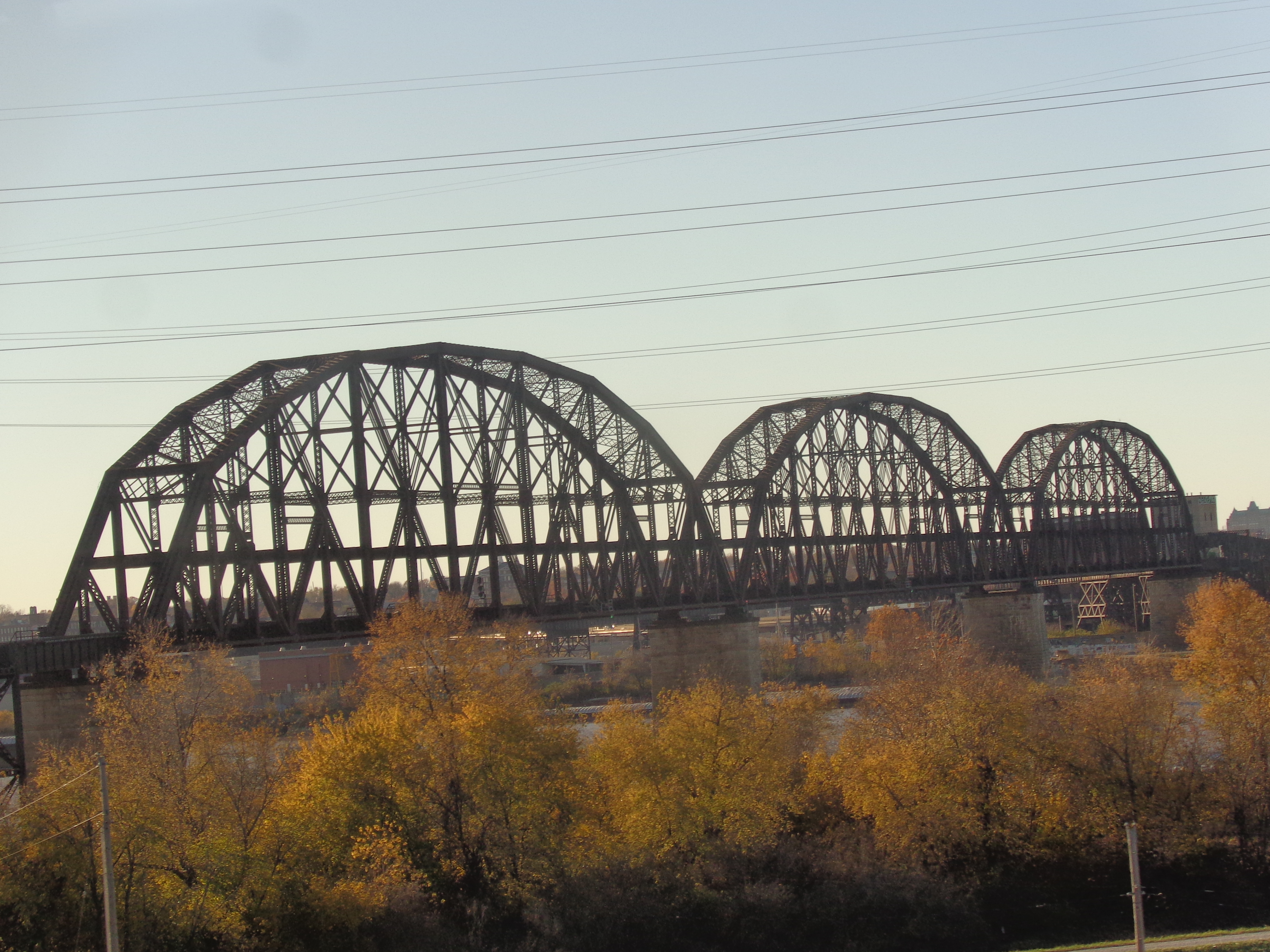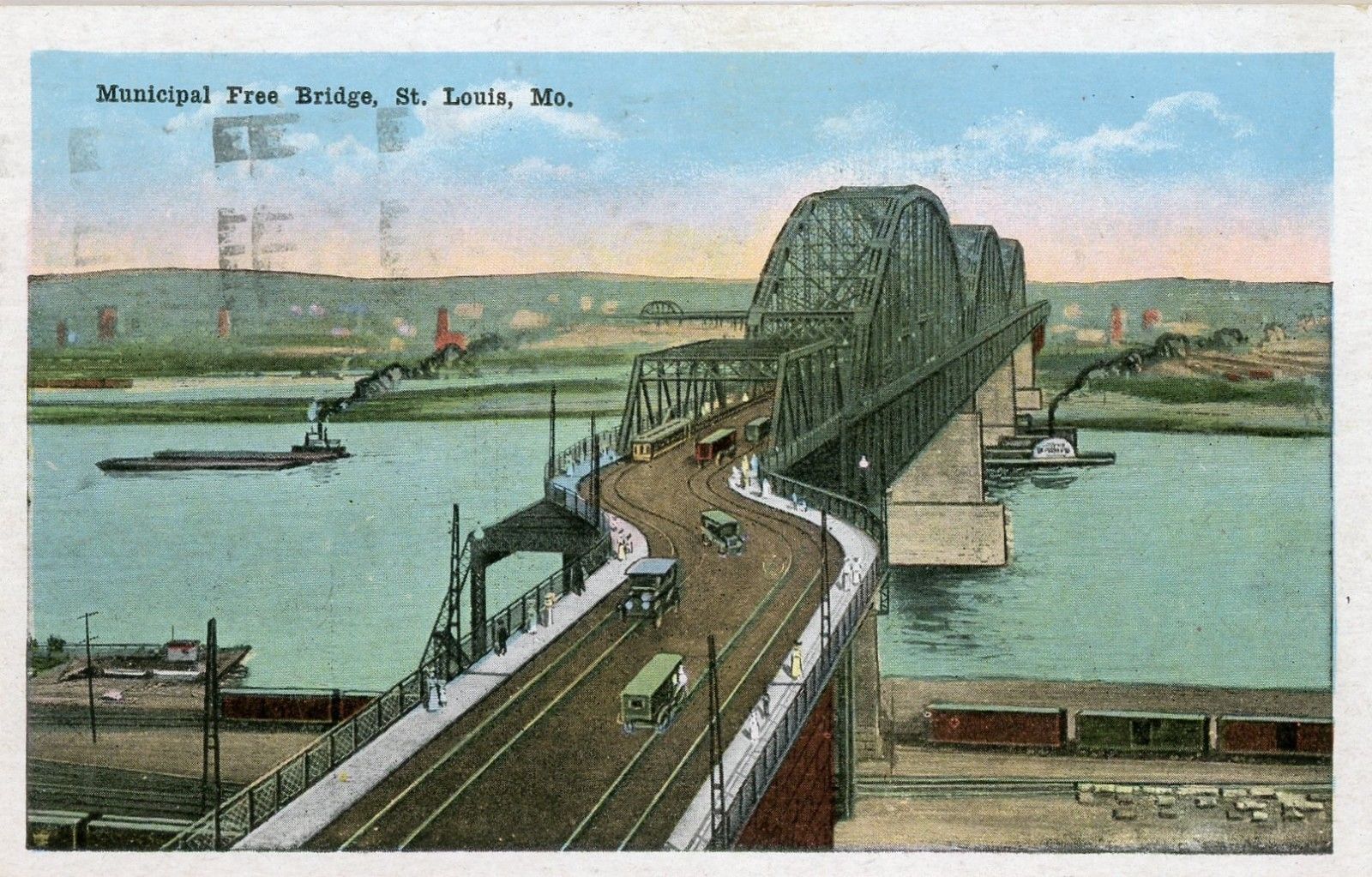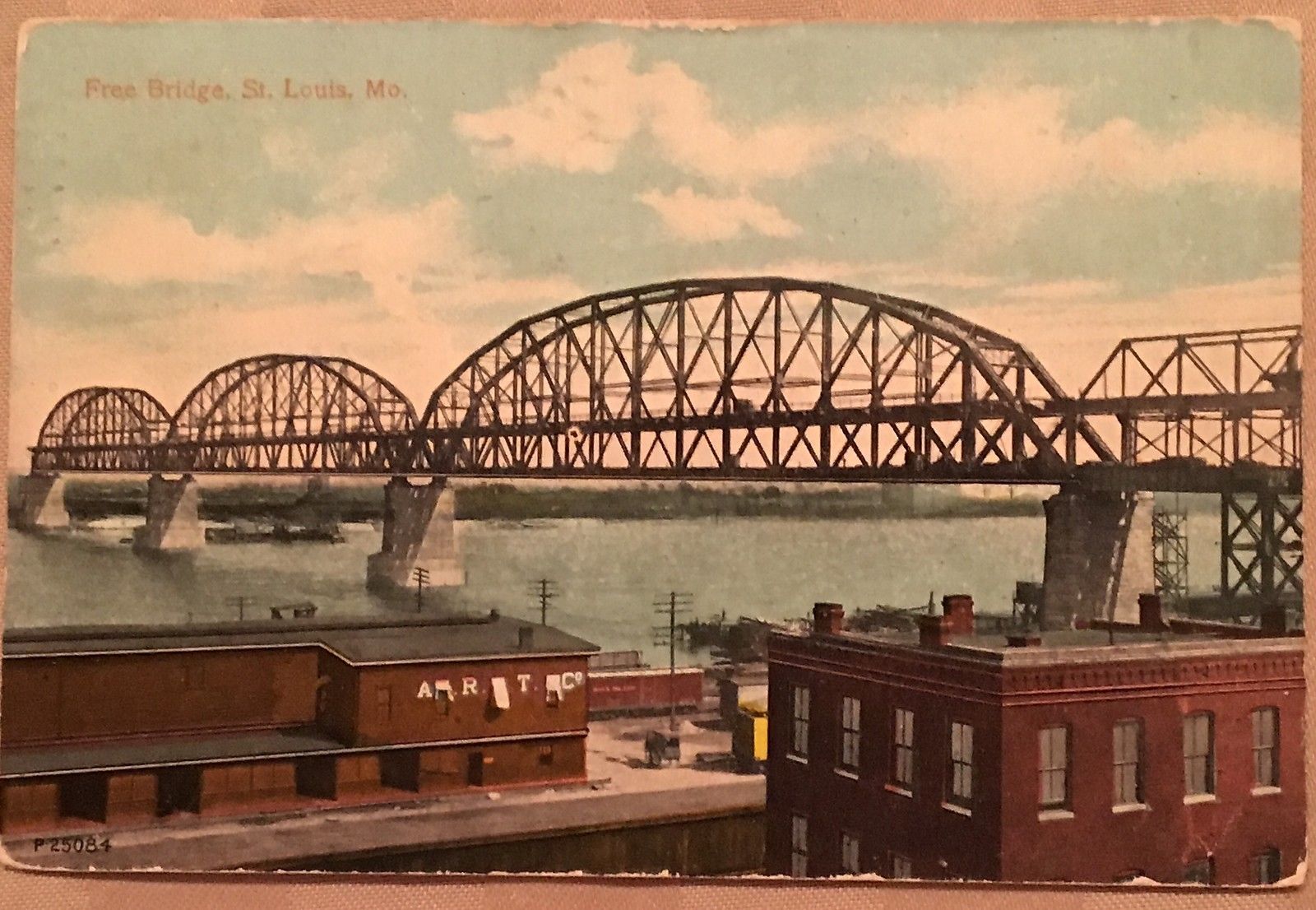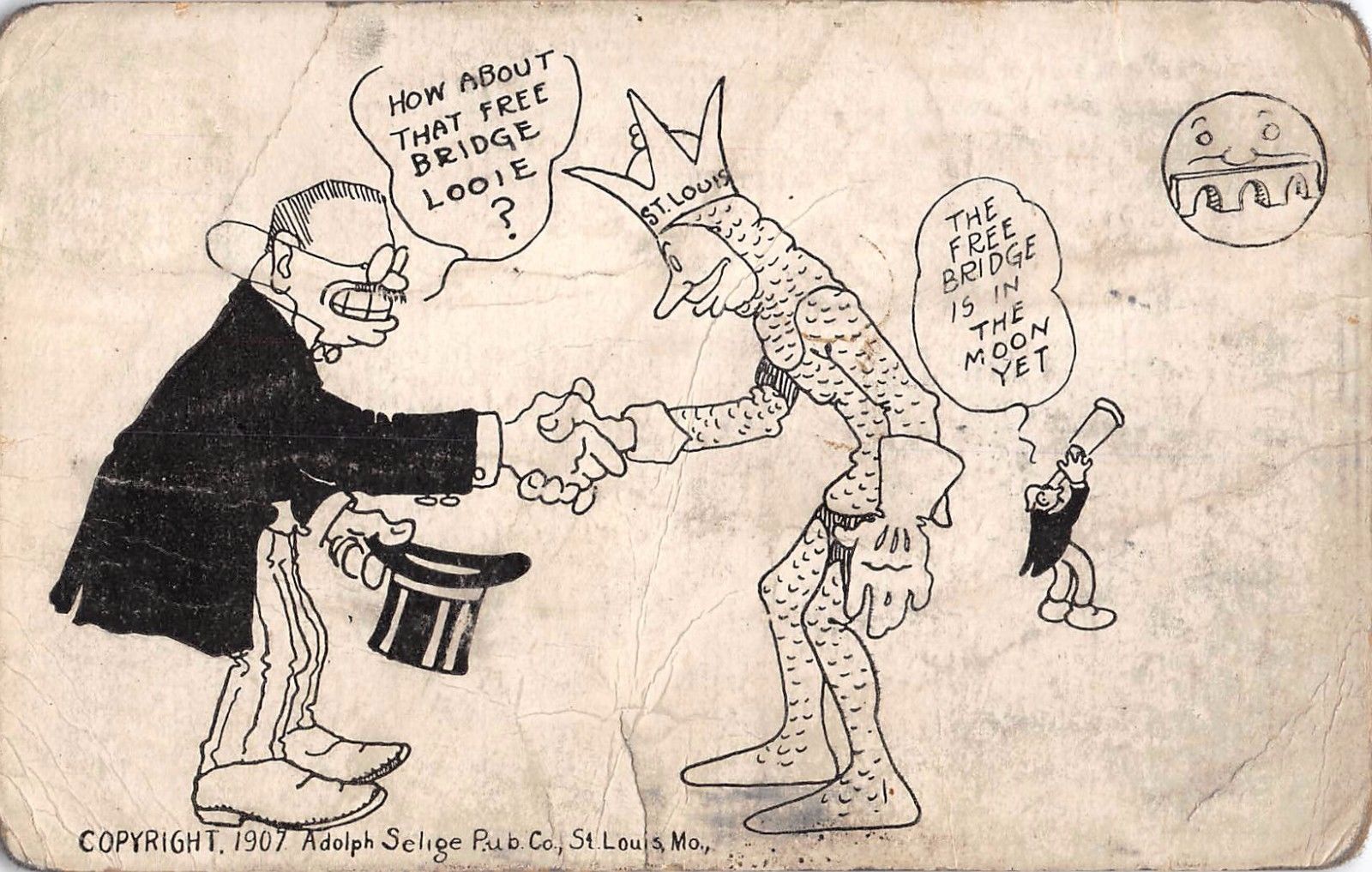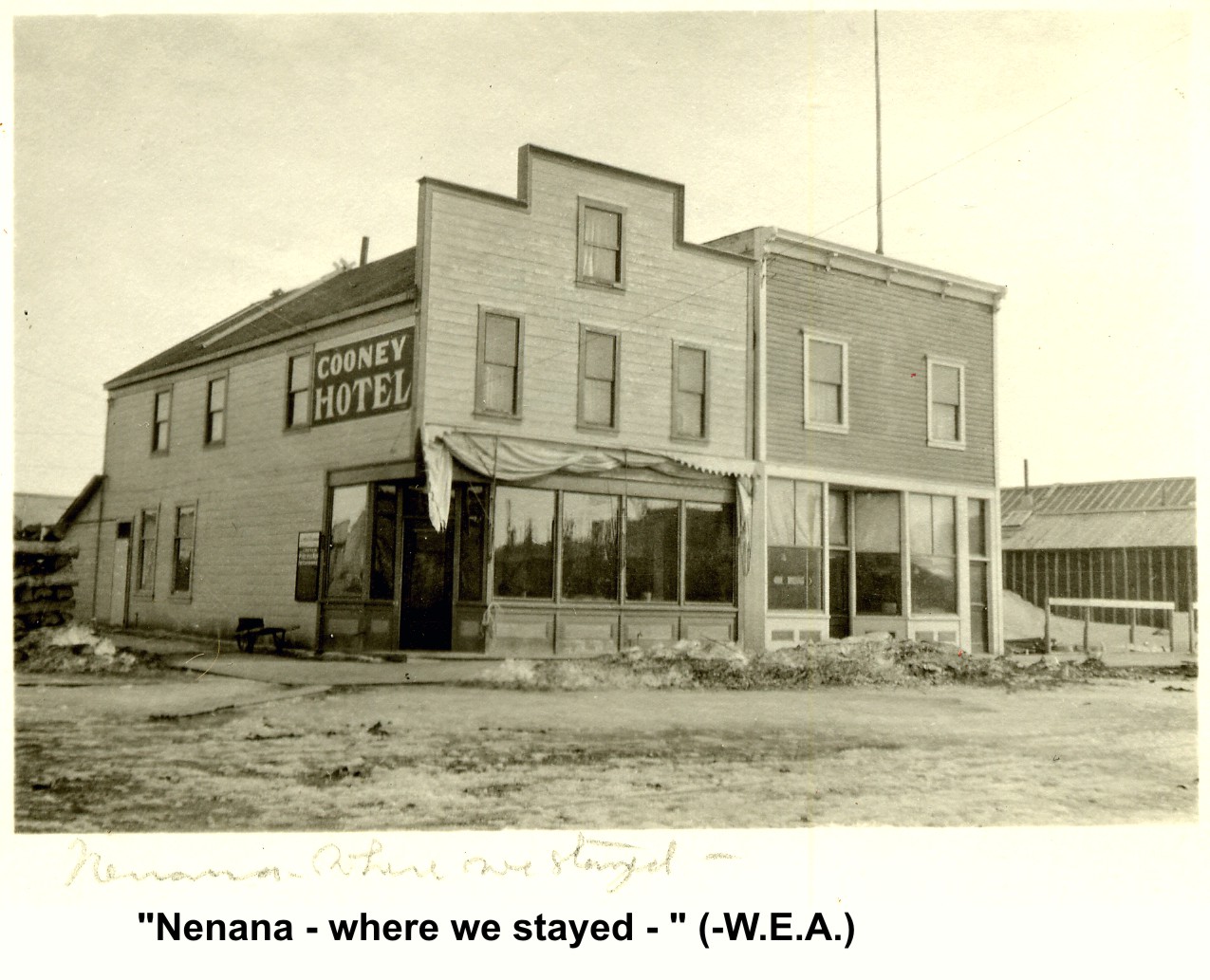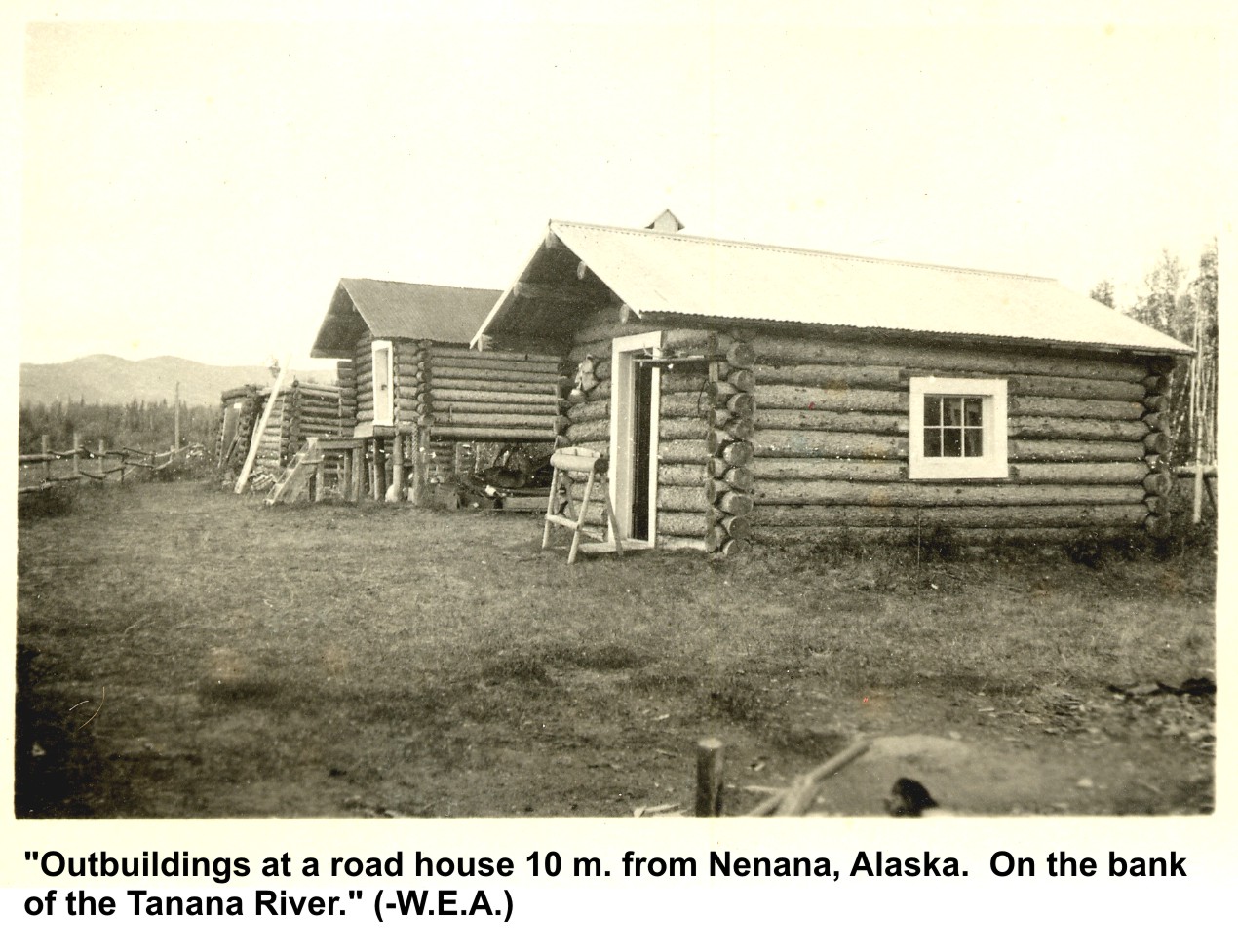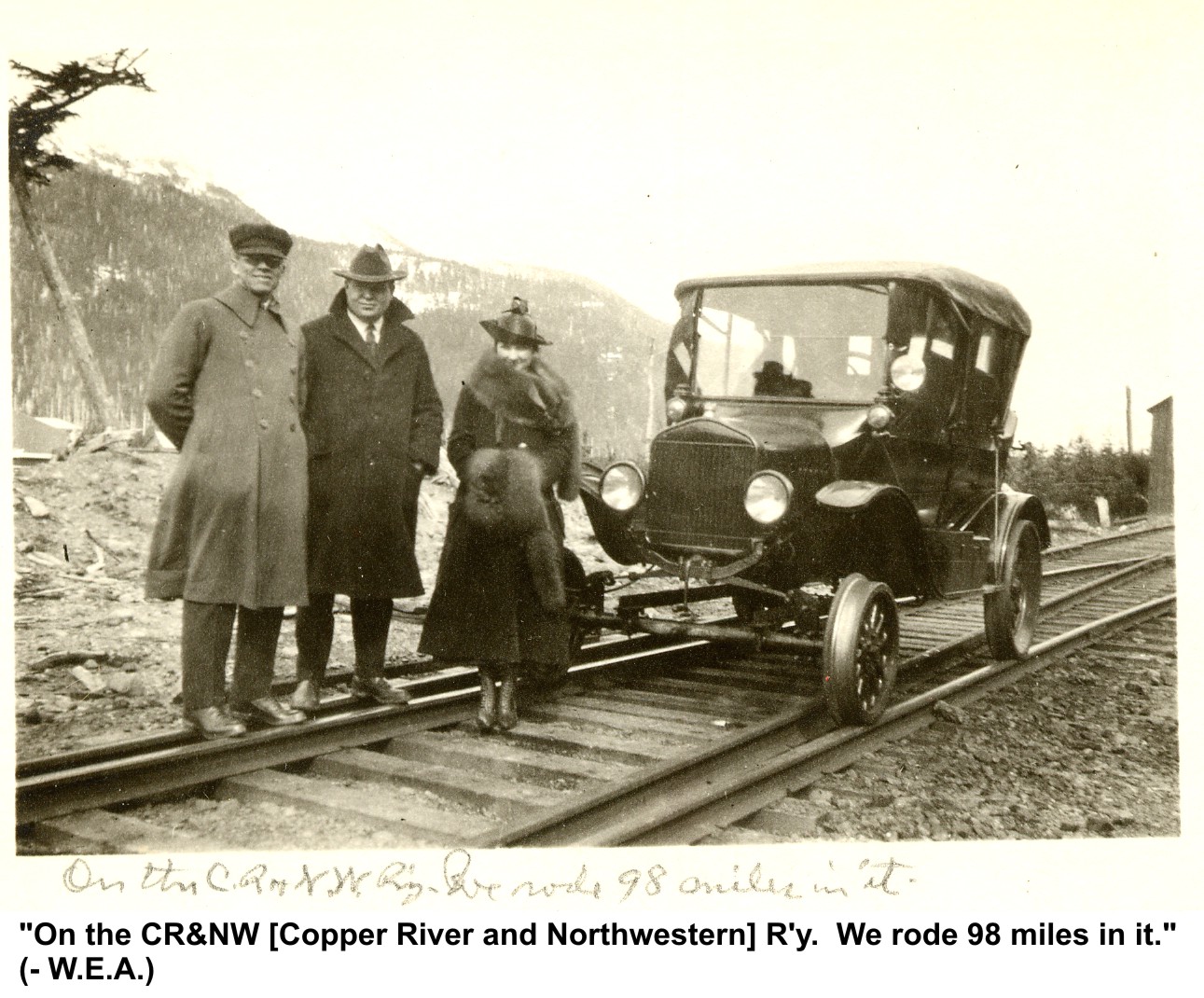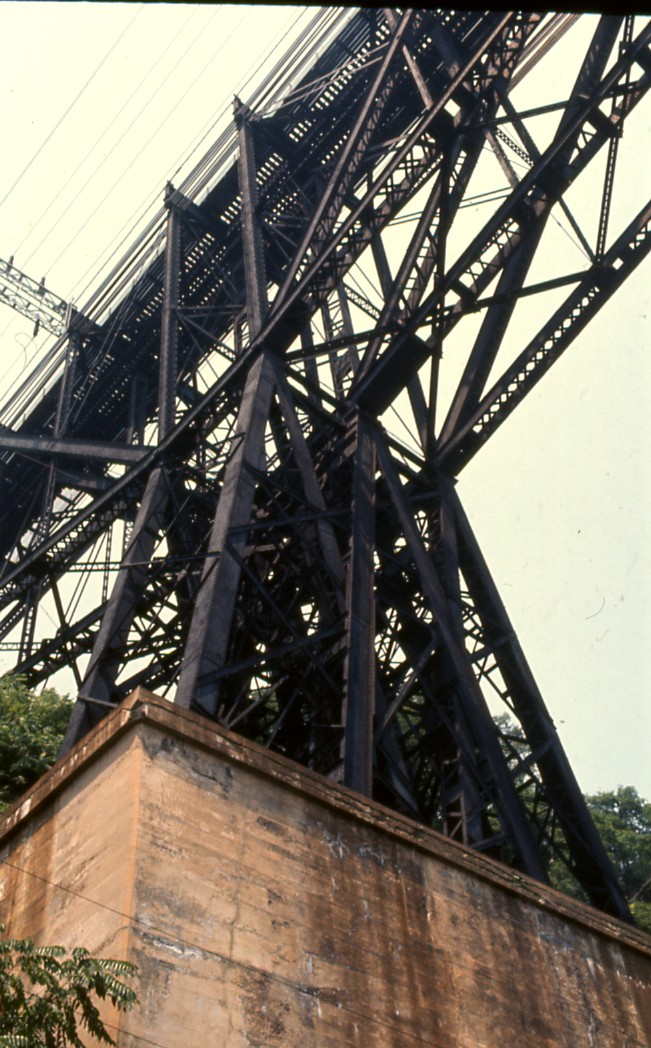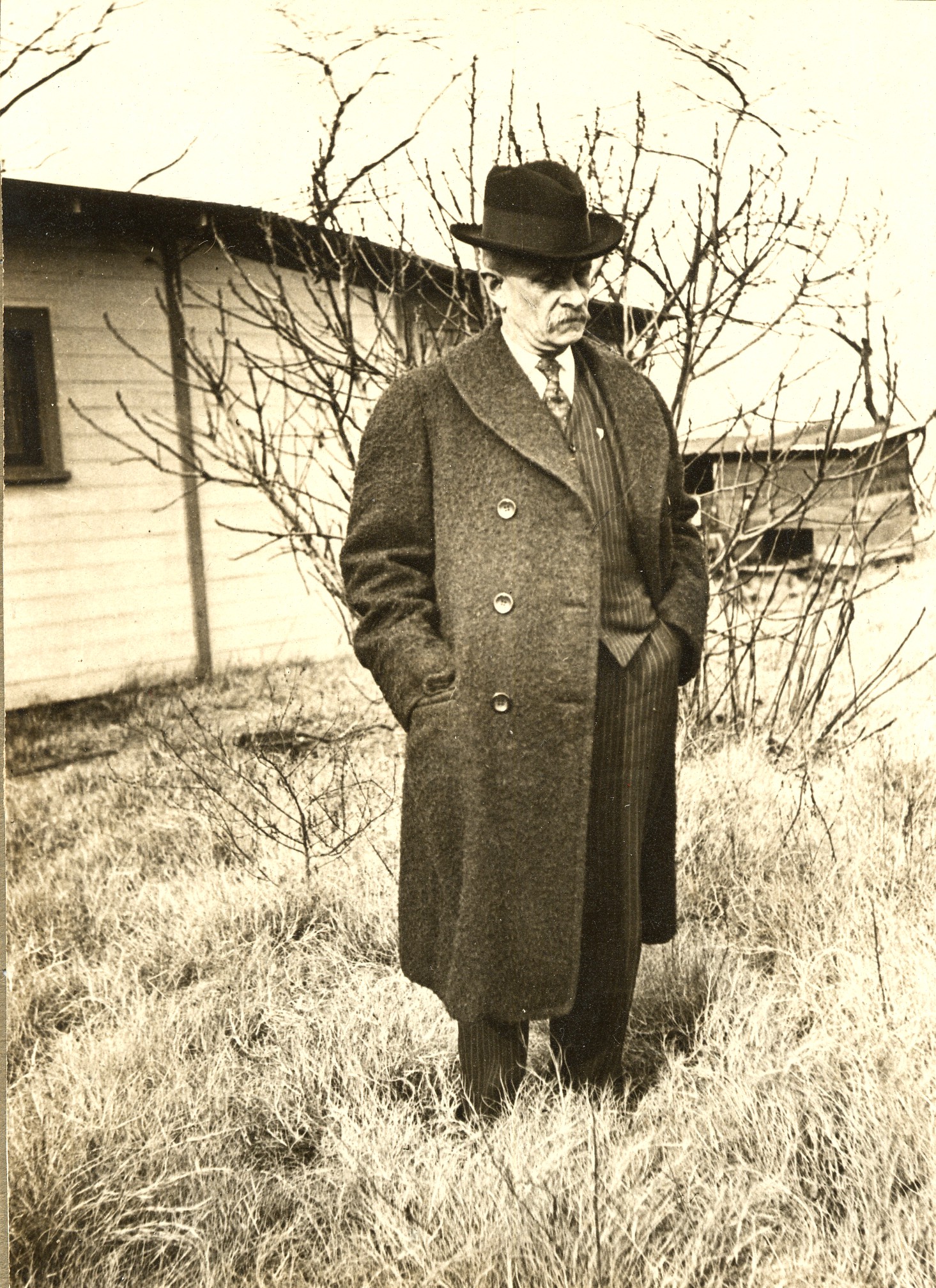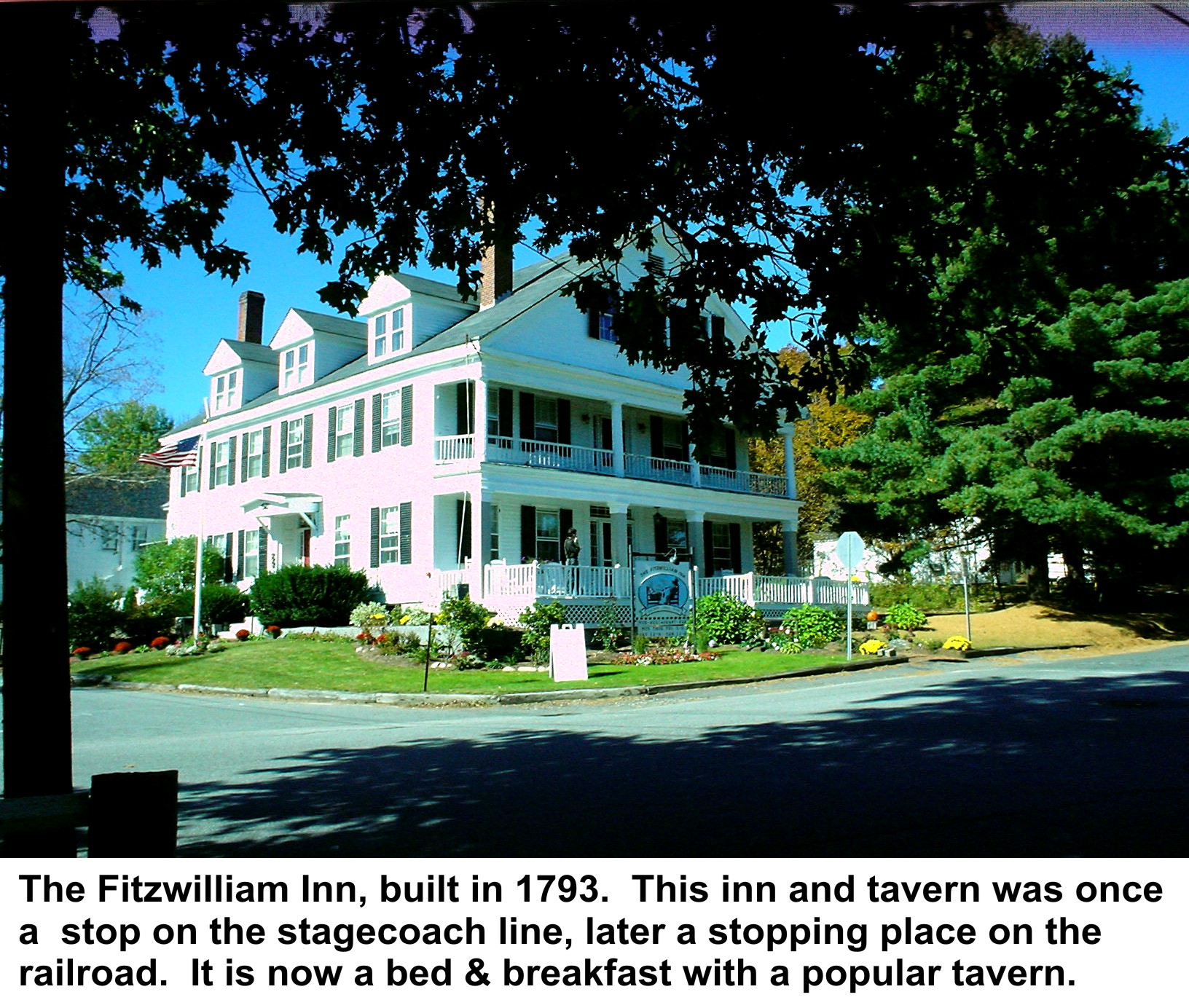The bridges over the Mississippi at Memphis, Tennessee
Of the four bridges over the Mississippi at Memphis, the two oldest, the
"Frisco" bridge (1892) and the Harahan (1916) carry railroad traffic, the
two youngest carry automobiles (on Interstates 40 and 55).
Walter Angier, working first for George Morison and Alfred Noble on behalf of the
Kansas City and Memphis Railway and Bridge Company, then with Ralph Modjeski,
was an engineer on both of the railroad bridges.
The I-55, Frisco, and Harahan bridges, while having quite different truss
shapes, are so close together, with the Frisco sandwiched between the other
two, that they can almost look like a single bridge, as can be seen in the
photos at the bottom of this section. The effect is enhanced by
the fact that the piers of the later bridges are exactly aligned with the
older structure, to facilitate navigation, Recently there
was word that a new bridge, for both trains and automobiles, may be built.
The pictures of both bridges that appear below were taken by me in 2011.
Photographs of the original construction, including group shots of Walter
Angier and the other engineers, donated by Estelle Angier, reside in the
archives of the Memphis Public Library and Information Center, They can be
seen online at their
Dig Memphis Web site.
The "Frisco" Bridge, 1892
The first bridge at Memphis, opened on May 12, 1892, was the occasion of
great civic pride and enormous public celebration, being the first bridge
across the Mississippi so far down river (of course, many years later,
bridges were to be built much farther south, in
Baton Rouge and New Orleans).
The Kansas City, Fort Scott, and Memphis Railroad, of which the Kansas City
and Memphis Railway and Bridge Company was a subsidiary, later was bought by
the Saint Louis and San Francisco Railroad or "Frisco" (which a few
mergers later became part of BNSF, which still uses the bridge), hence the
name by which it is now known. It was built to carry trains, but had a wide
enough deck to accommodate buggies and, later, automobiles, if no train was on
the span. It now carries only rail traffic (single track).
Walter Angier and Ralph Modjeski were both employed on the
"Great Bridge at Memphis," as it was originally known, before they
went into partnership with each other. The bridge was principally
the work of George S. Morison, a celebrated
bridge designer of his day, a pioneer in the building of bridges of
open-hearth steel, which was replacing stone and wrought iron as a
structural material at the time. Morison served on the
Isthmus Canal Commission, where he was influential in changing the minds
of decision makers (including Theodore Roosevelt) to locate the canal in
Panama instead of Nicaragua. Walter Angier was invited, as his daughter,
my Aunt Estelle, told me in a letter in 1973,
to work on the Panama Canal, but "Mama wouldn't let him go"!
The New York Times reported the festivities attending the
opening of the bridge, under the title
"Memphis's Great Bridge" (available from the Times web site).
In addition to descriptions of the decorations and parades, the article
describes how, at a signal from engineer Morison, "a procession of
eighteen locomotives moved upon the bridge."
Senator Voorhees of Indiana delivered a lengthy and florid oration,
of which the Times provides excerpts. The article also
describes some of the structural details of the bridge, and tells
how, during excavation for the bridge piers some Spanish halberds from
the time of de Soto were unearthed. Voorhees predicted the building of
the Isthmus Canal, in which, as we know, Morison played an important part.
Later in the month, Railway World (May 21, 1892, vol.36, p. 485,
available from Google Books) published an almost identical article, with
only a few changes in expression, with the title
"The Memphis Bridge". It omits the excerpts from Senator Voorhees'
speech, and includes the interesting detail that the parade of "ponderous"
locomotives was performed "as the supreme test." In both articles, the
lengths of the individual spans don't add up to the total as given.
Parts of the Times's breathless coverage are reproduced below.
The Harahan Bridge, 1916
The Harahan Bridge, built for a consortium including the
Rock Island Railroad, was named for the former president of the
Illinois Central, who had died when his private railroad car was
rear-ended by another train (as reported in detail by the
NewYork Times.)
It was the design of Modjeski and Angier, now working together.
It was fitted in 1917 with rickety roadways suspended from both sides.
These were in use until the first real automobile bridge was built
in 1949. One of these roadways may be rebuilt as a pedestrian walkway.
It now carries trains of the Union Pacific (double track).
Walter Angier's work on both bridges at Memphis
made its way into the popular writing of its time. Julian Leonard Street,
journalist, playwright, and travel writer, published his American
Adventures: A Second Trip "Abroad at Home' in 1917. In Chapter L,
"Modern Memphis," he describes a visit to the second, or Harahan bridge,
then under construction (and his queasiness at walking out on the
half-finished structure). Paragraphs are excerpted below (quoted from the
Project Gutenberg eBook of American Adventures by Julian Street).
In these selections, "W.E. Angier, assistant chief engineer" on the
new bridge, is described as having found, during excavations for
the old, or "Frisco" bridge, "a Spanish halbert...thought [to] date from the
time of De Soto."
Street's queasiness upon the bridge was justified: a number of steelworkers
(some say as many as twenty-three) were in fact killed during its construction.
Dr. Robert Wood Mitchell of Memphis, for whom my father was named
Memphis was the home of Dr. Robert Wood Mitchell, physician, army
surgeon (in the Confederate Army), founder of the Memphis City Hospital,
a leader in the fight against yellow fever, advocate for the education of
female professional nurses, and pillar of the community. He was a
family friend of Mary Angier, and Aunt Estelle reported that she believed
that Walter and Mary lived with the Mitchells when they were in Memphis.
This would have been during the building of the first bridge.
They named their younger son, who grew up to be my father, after him,
Robert Mitchell Angier.
|

